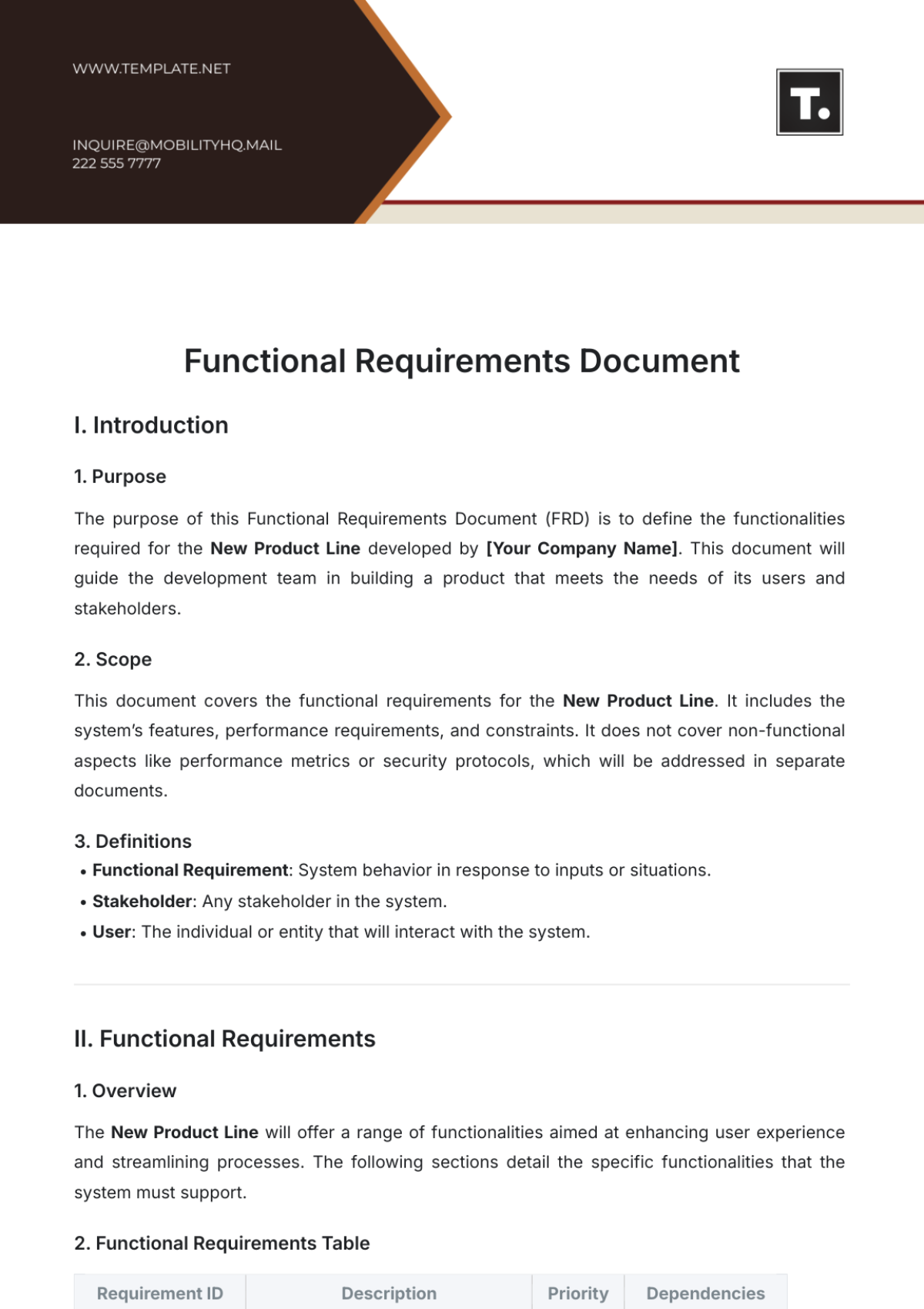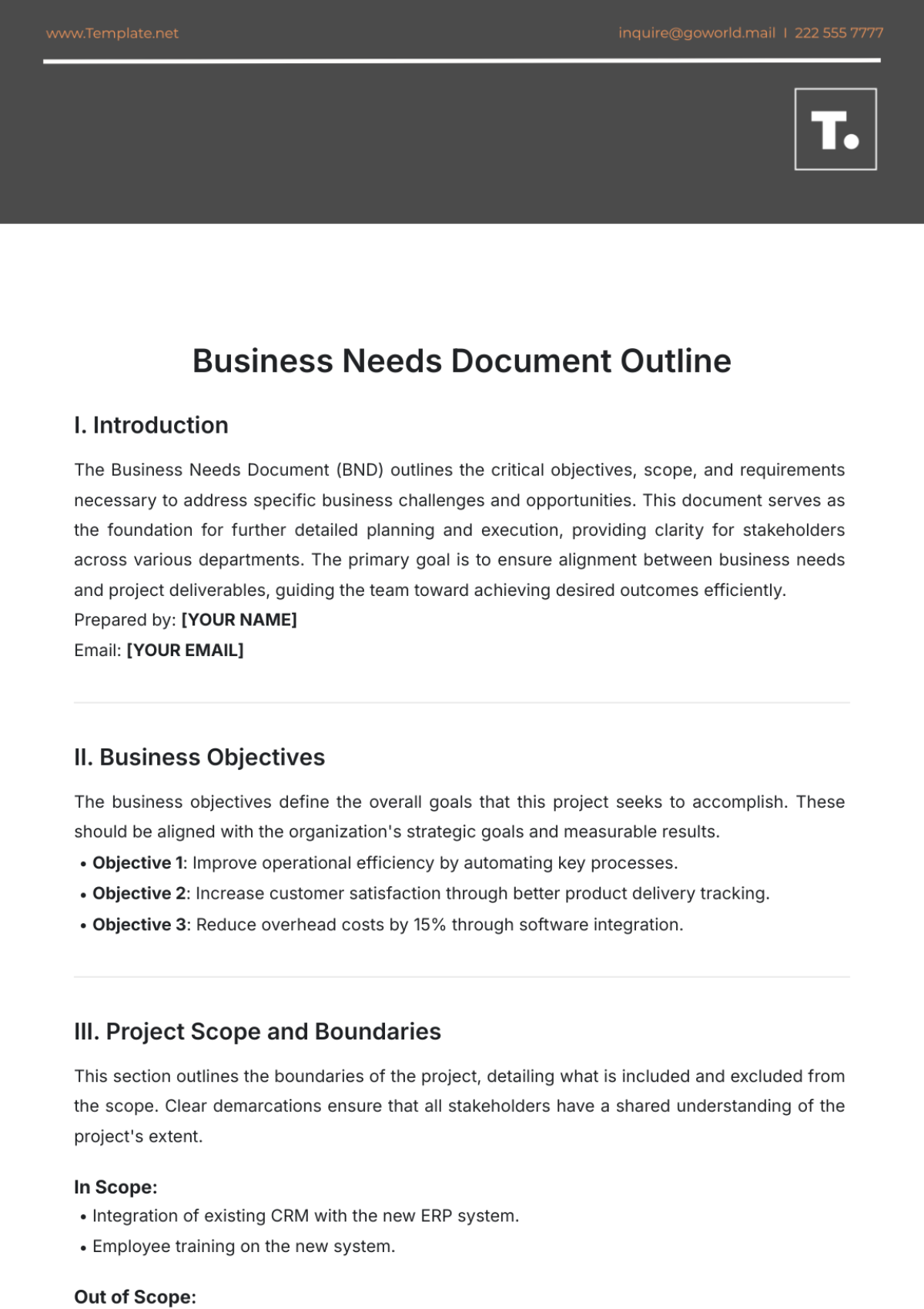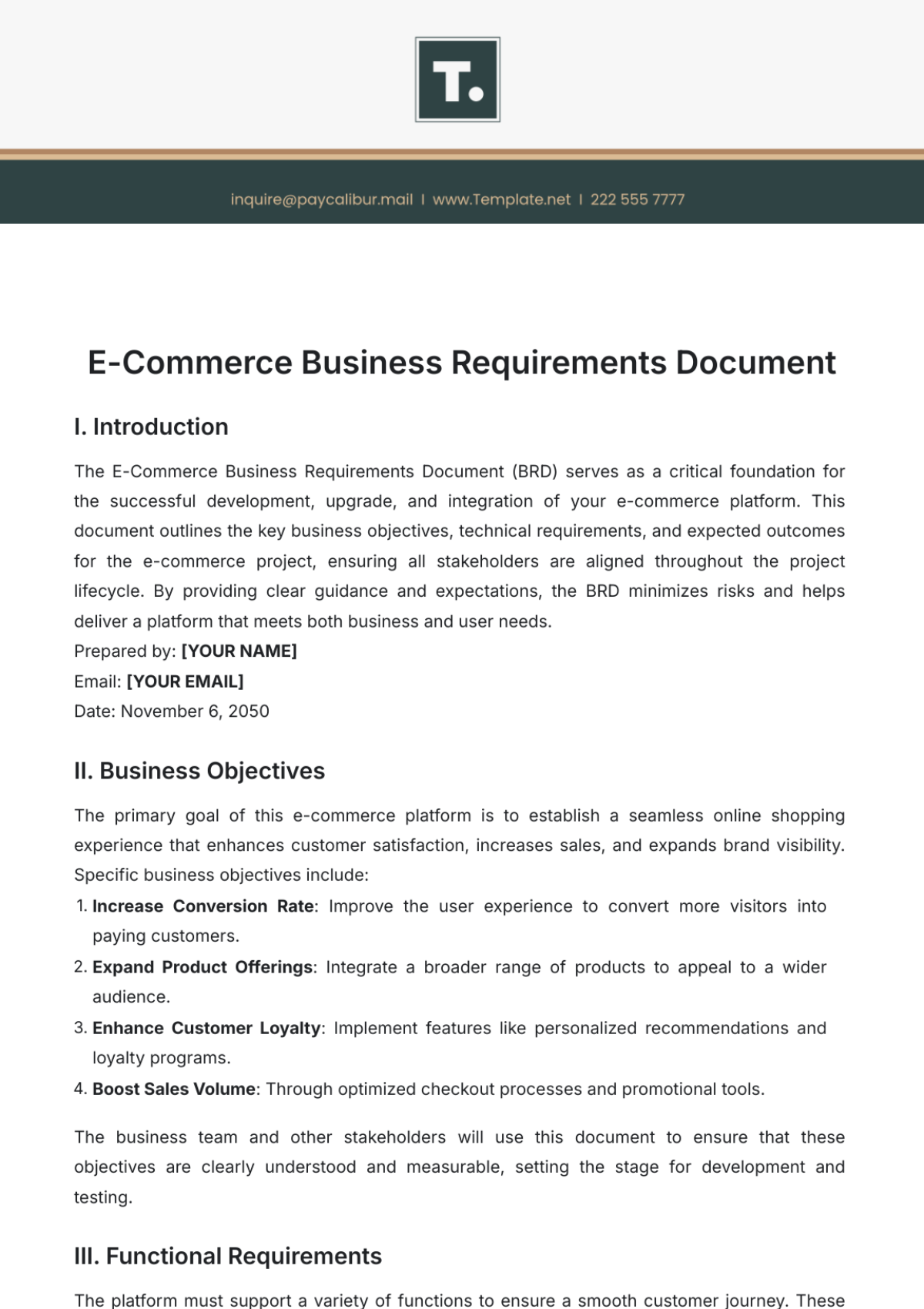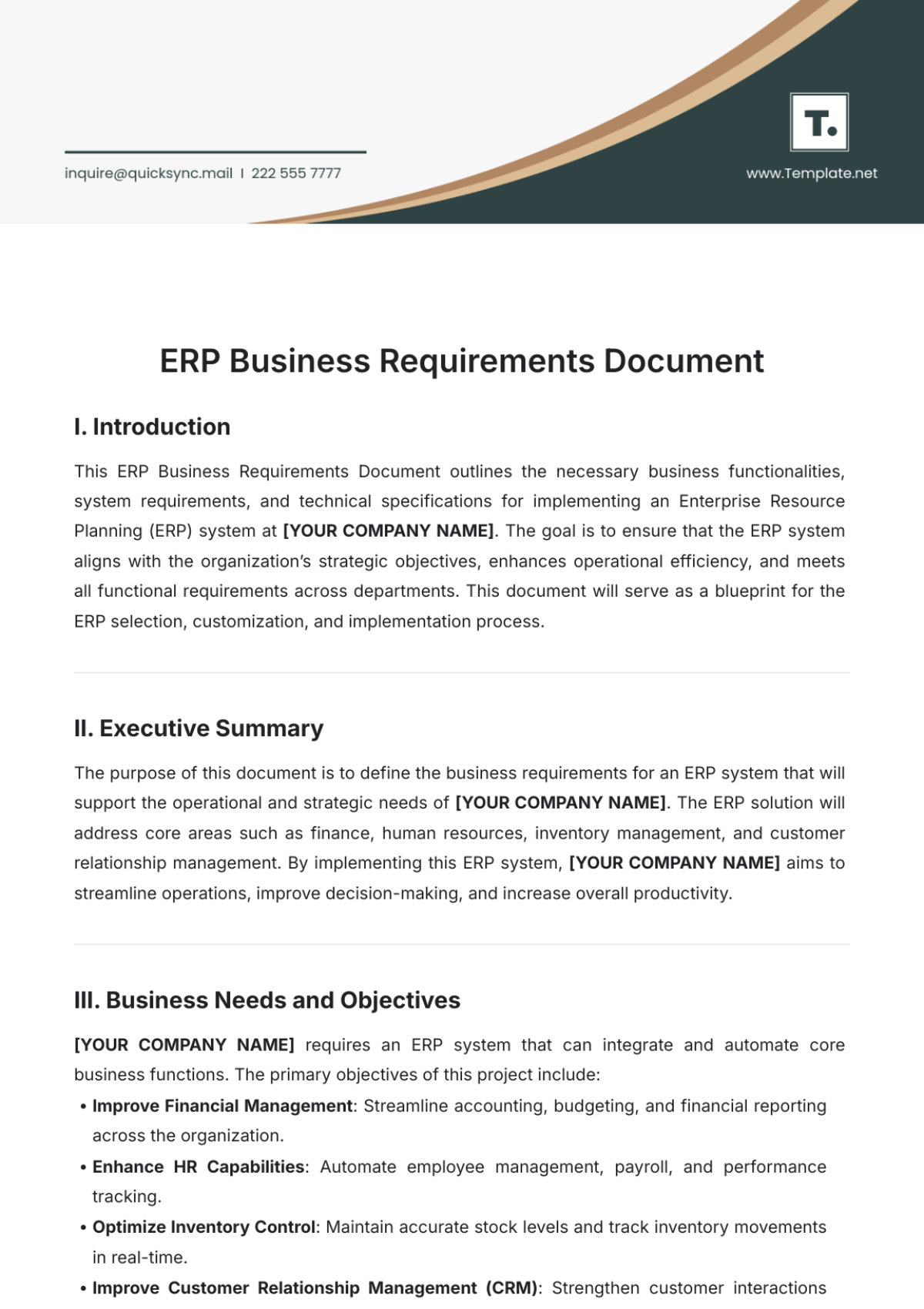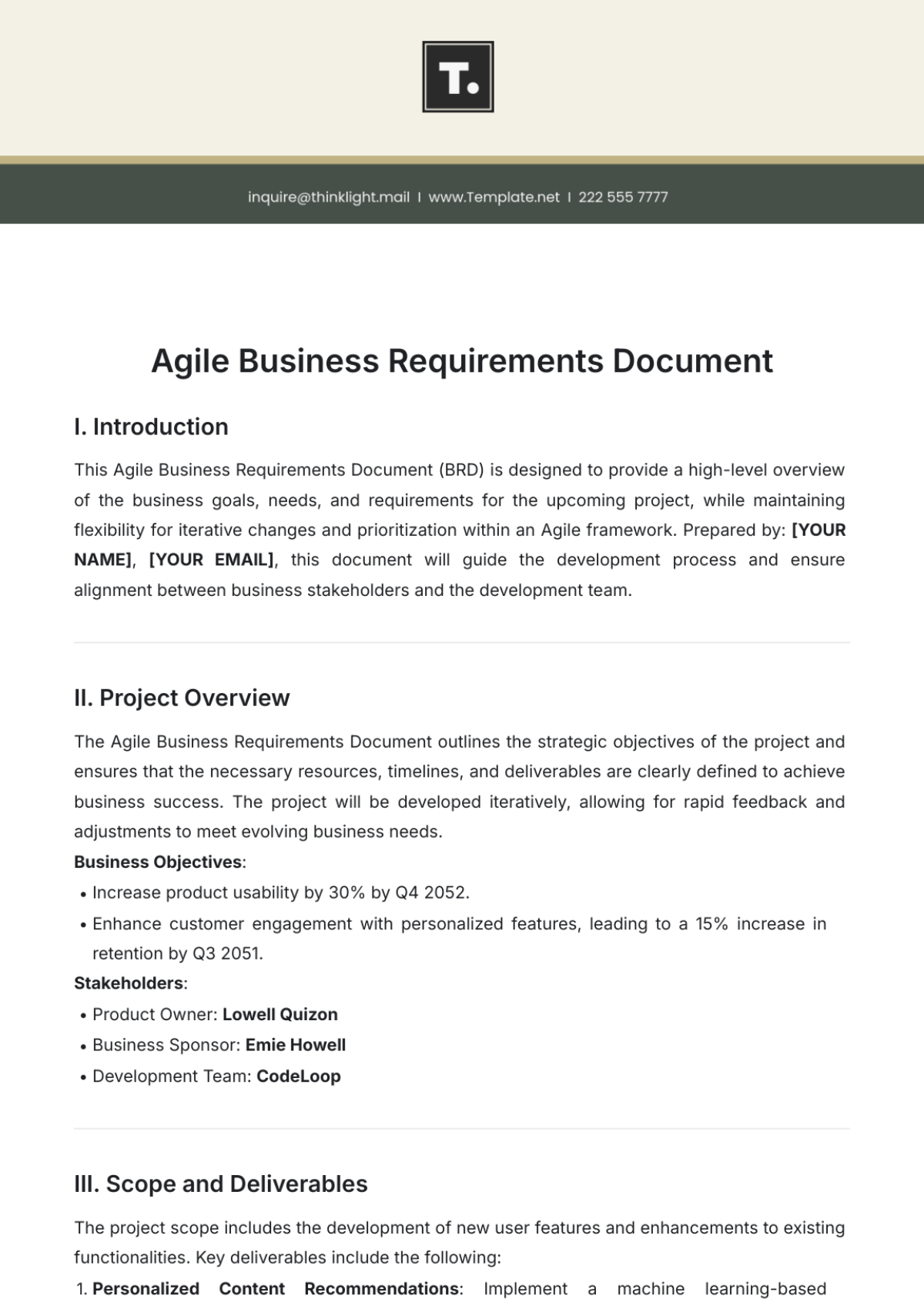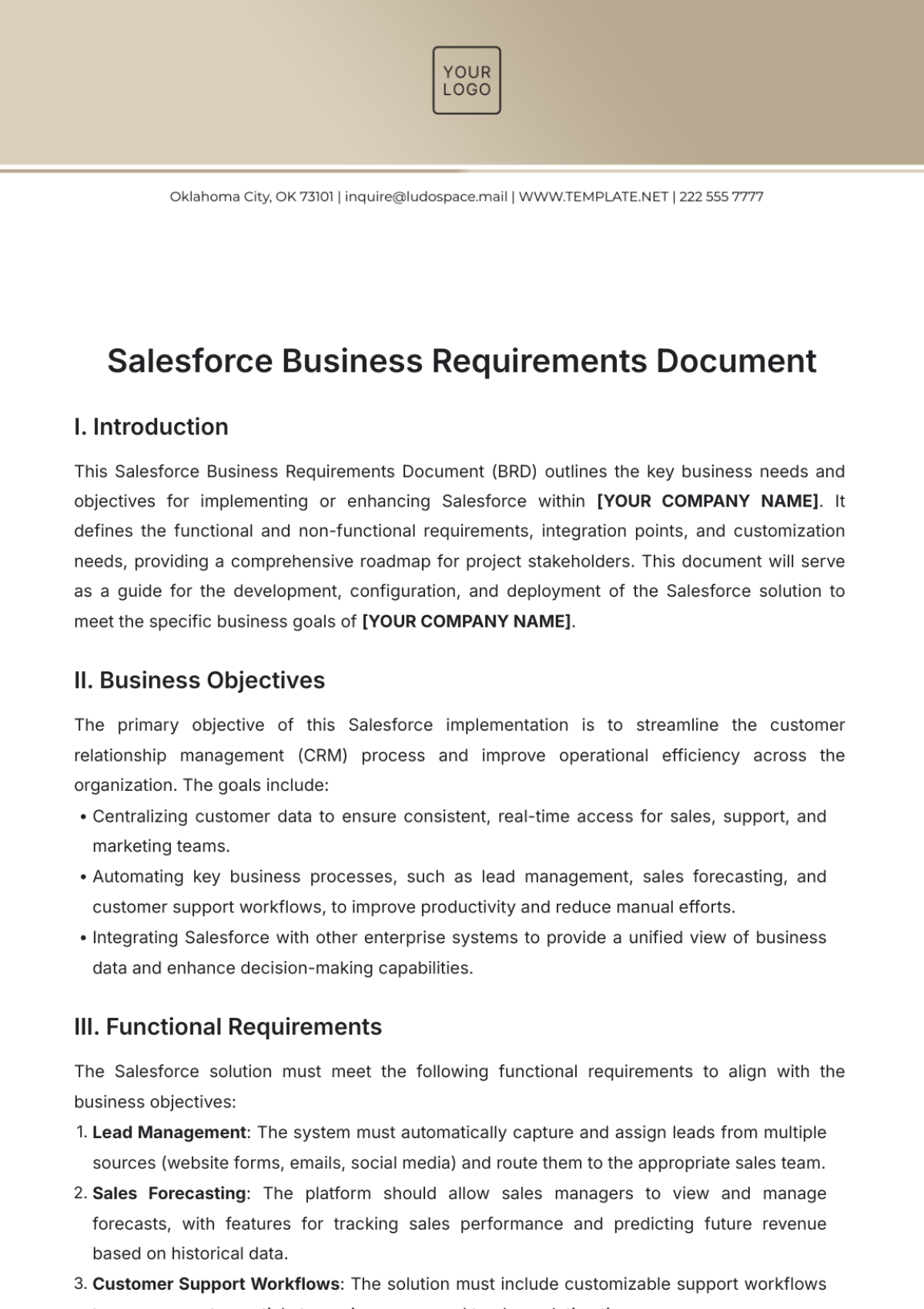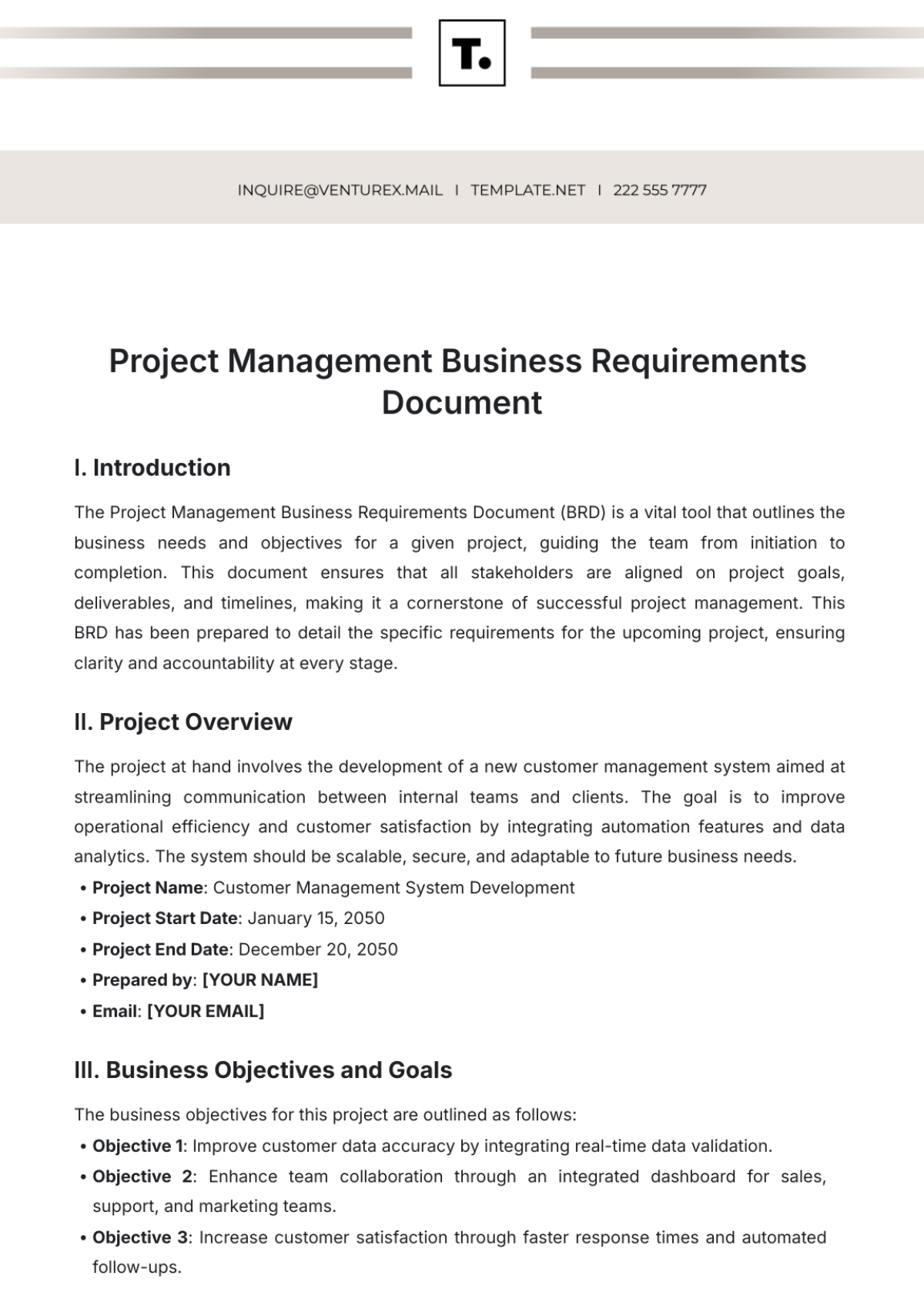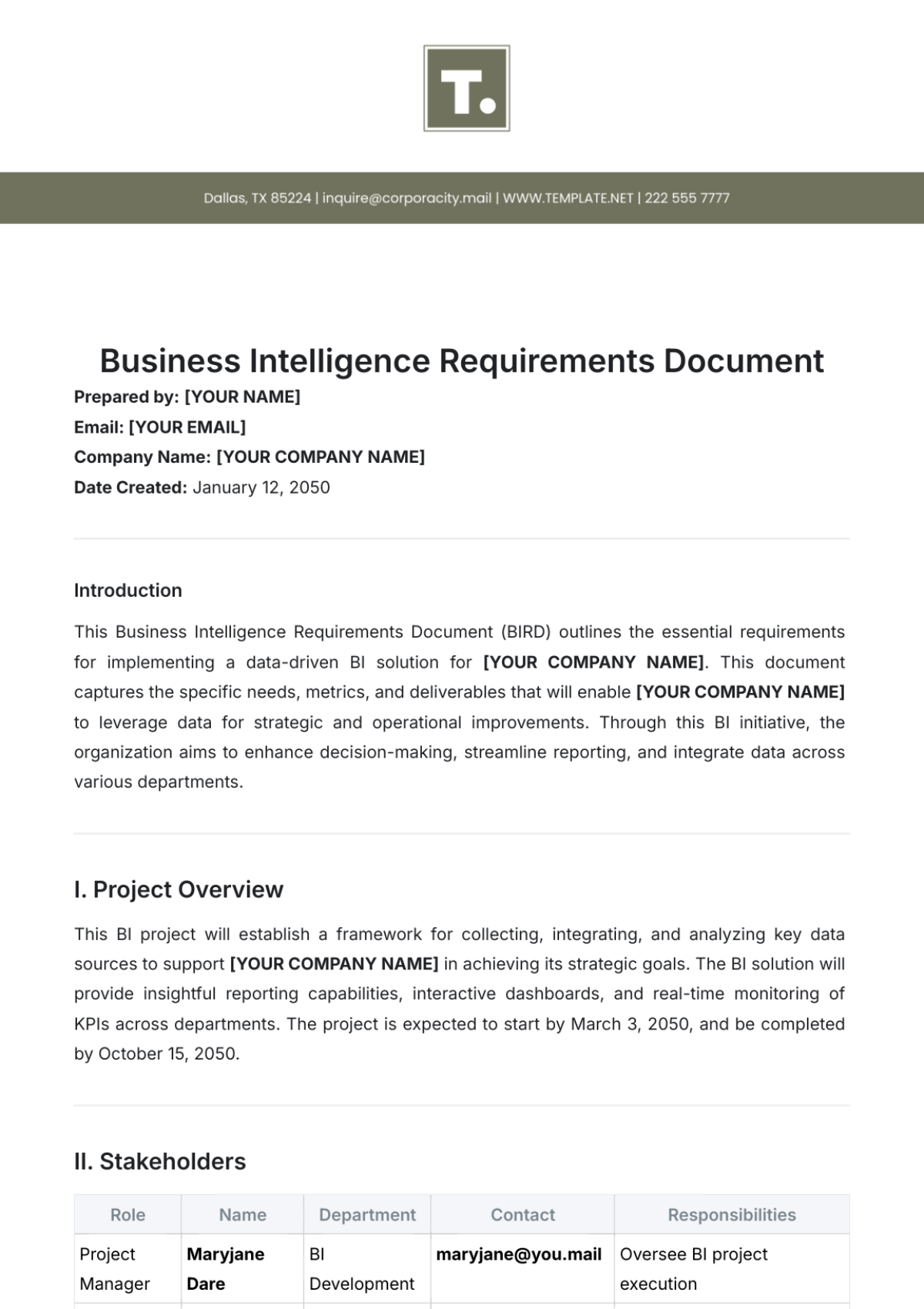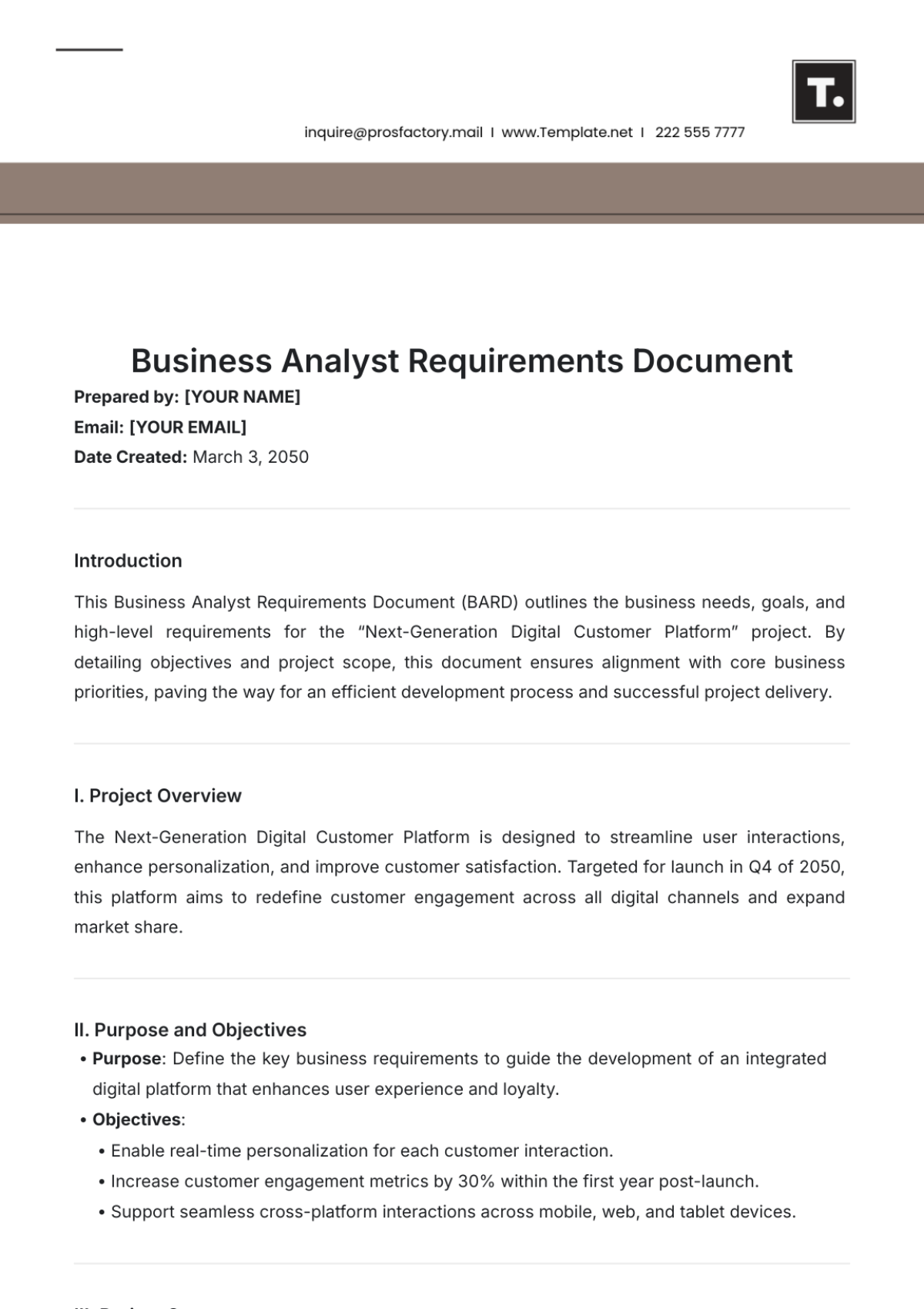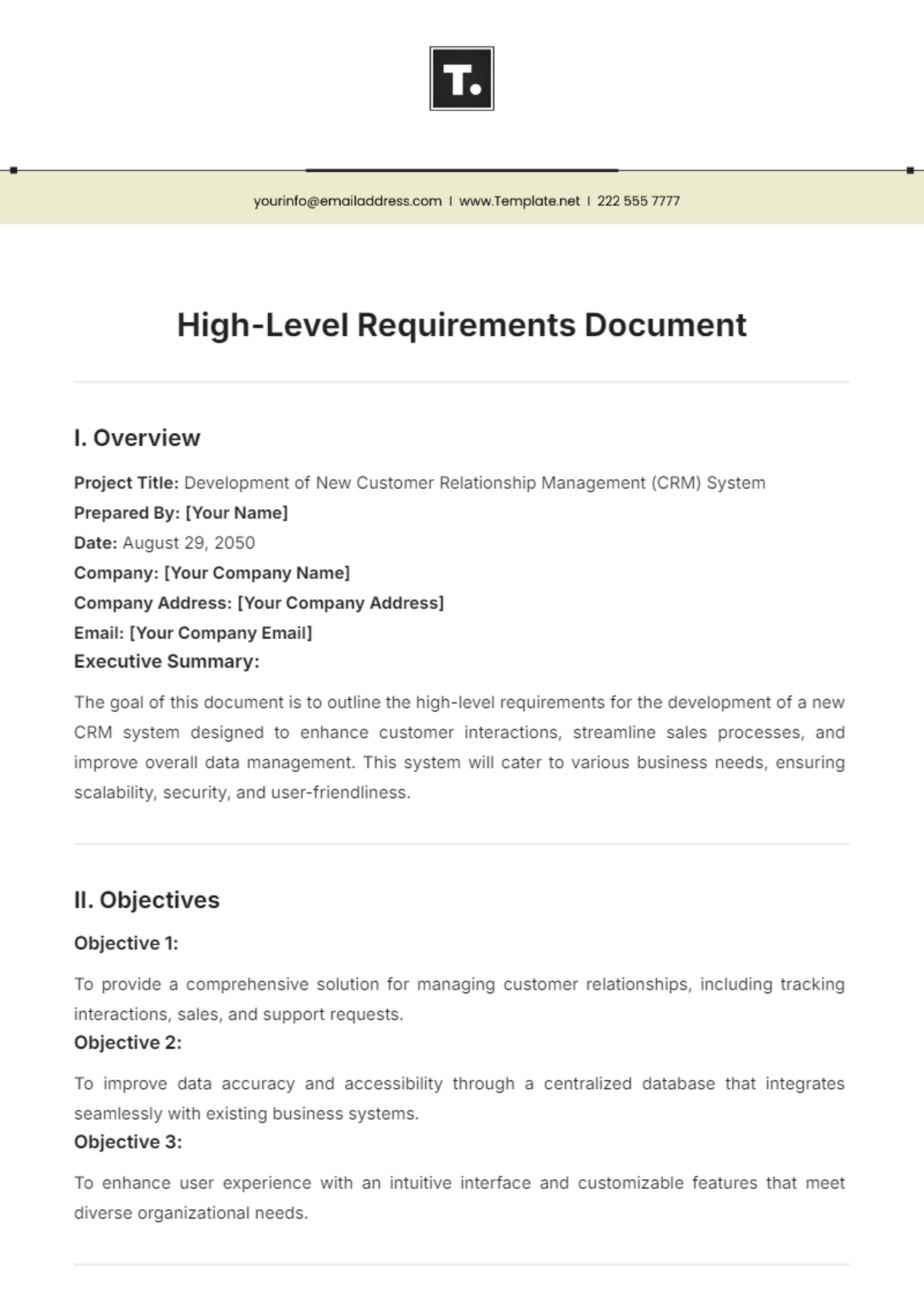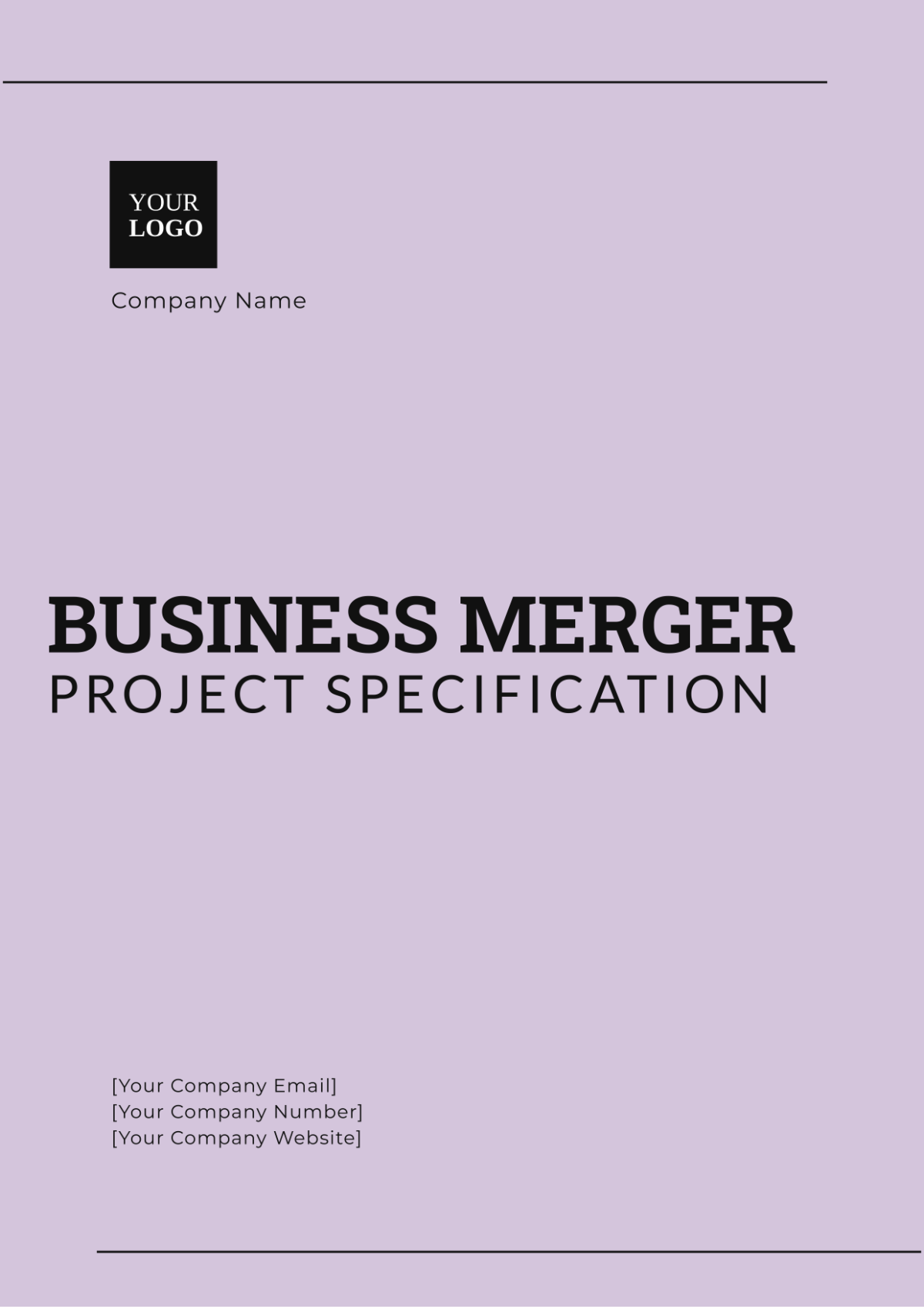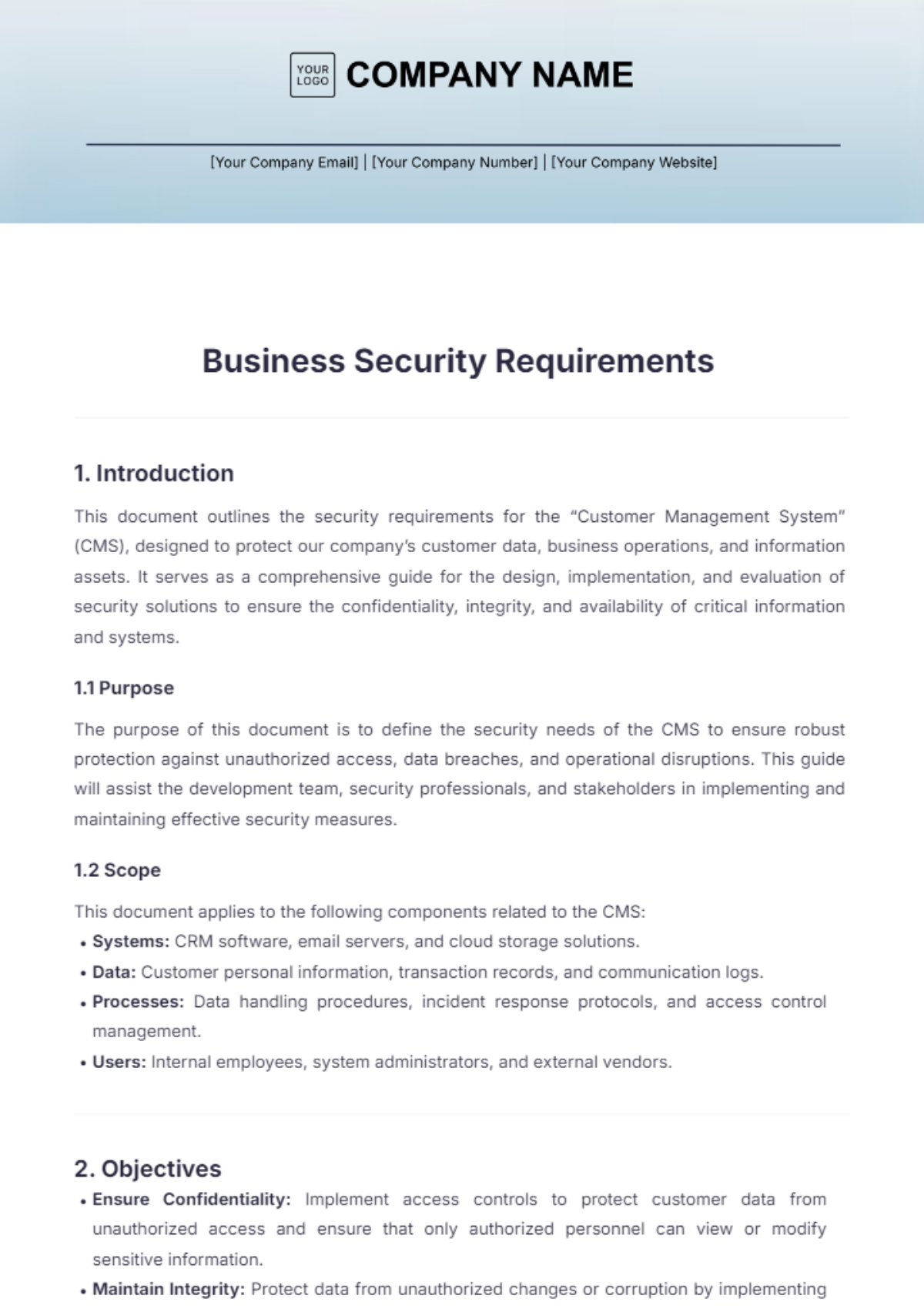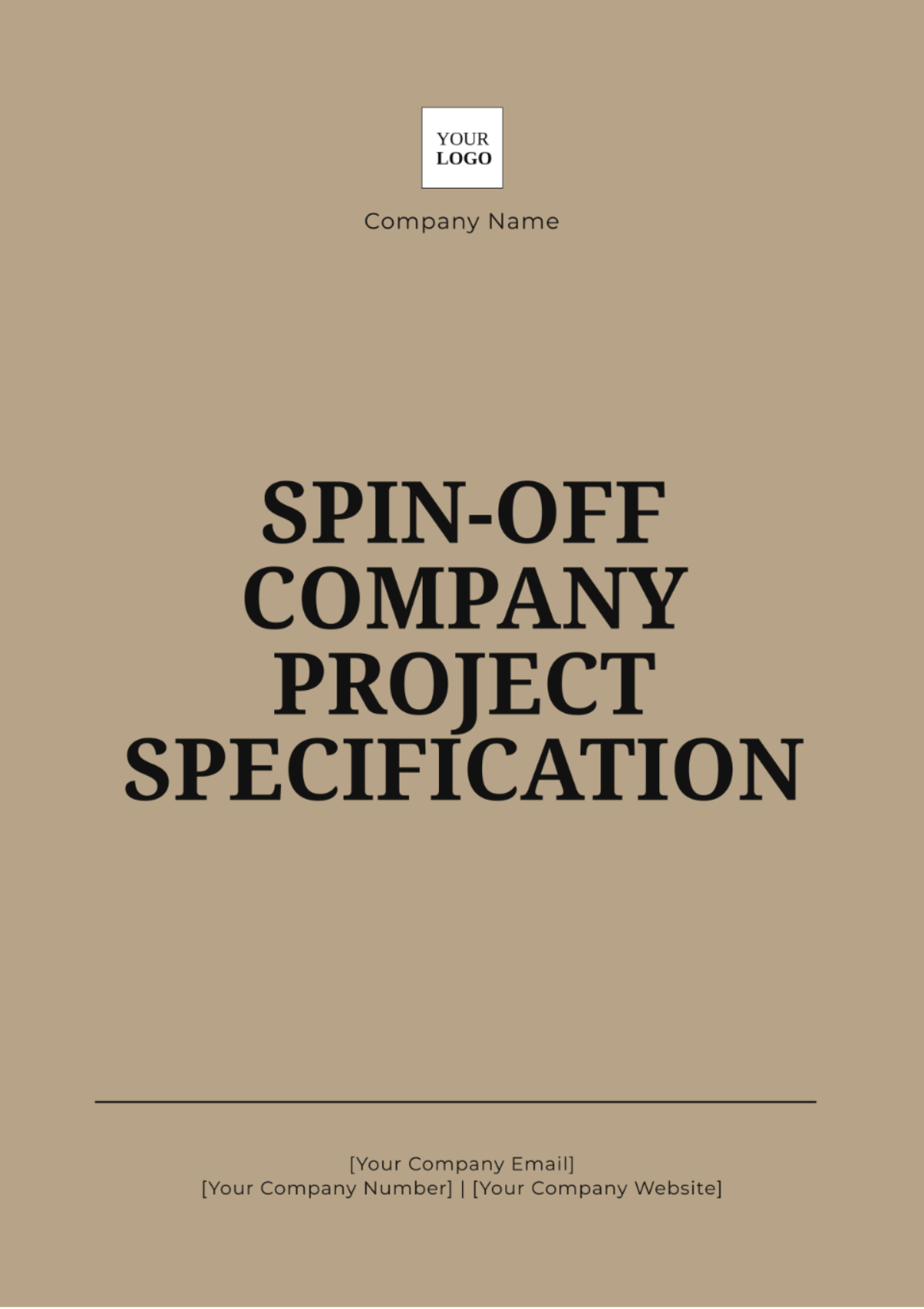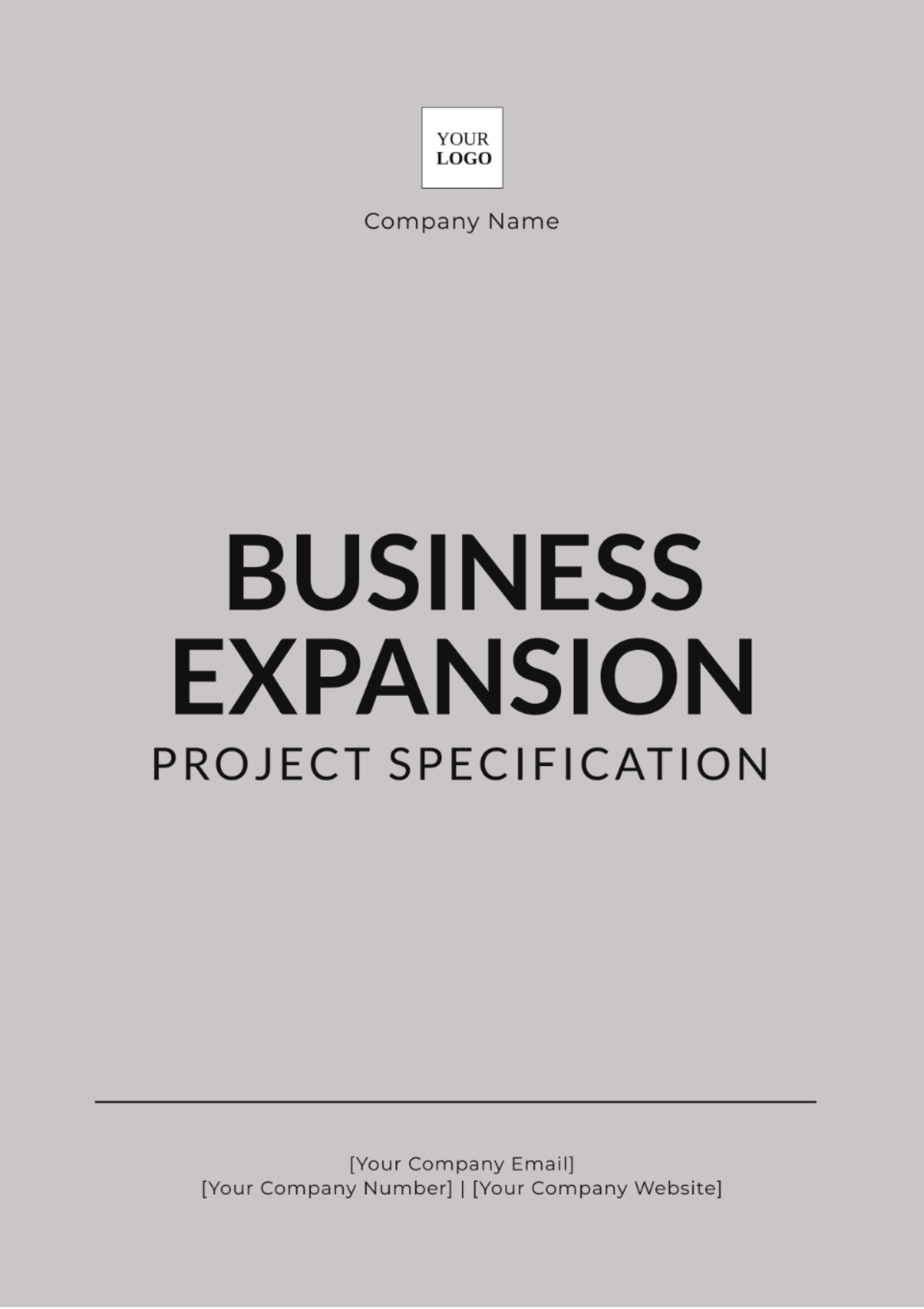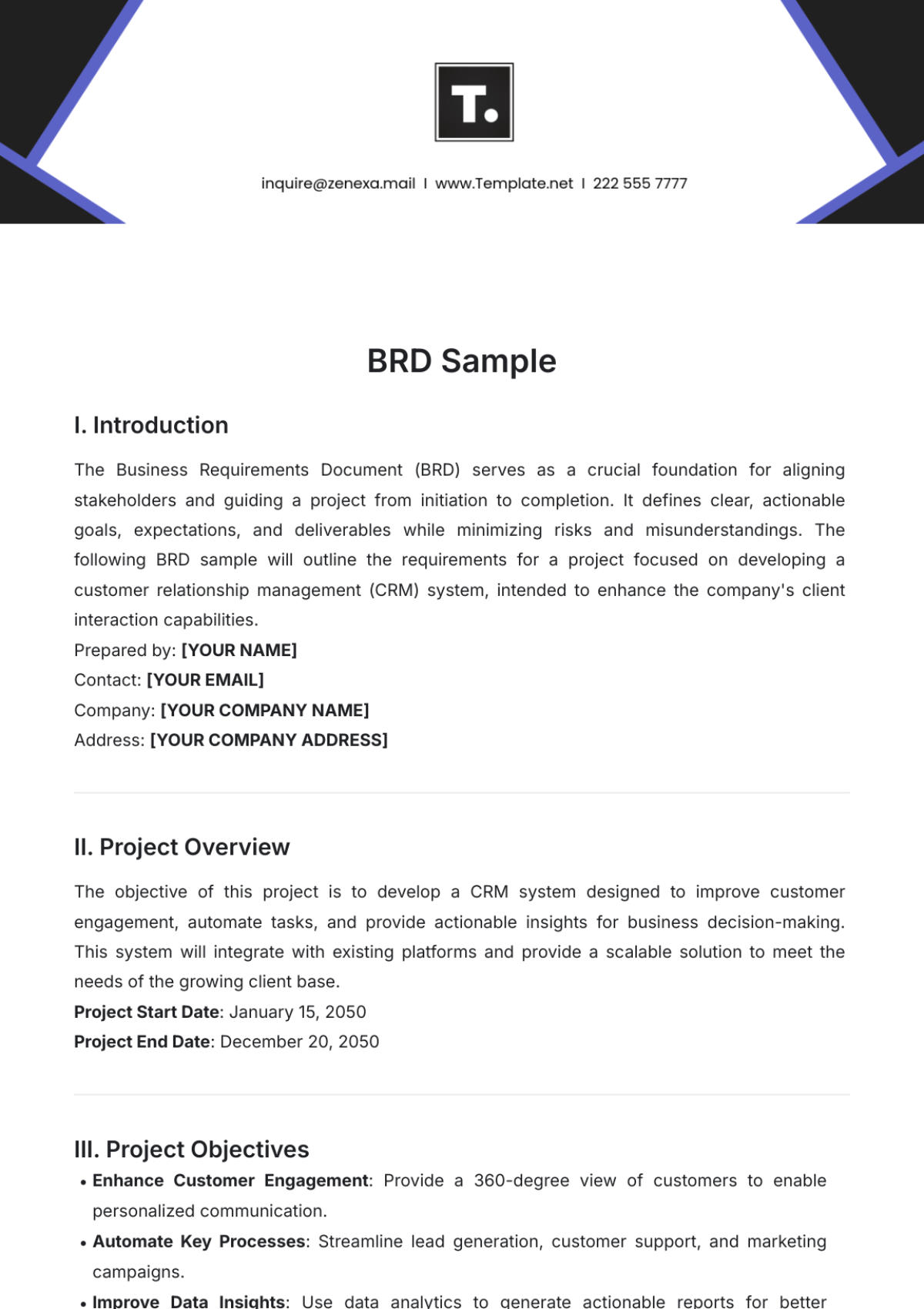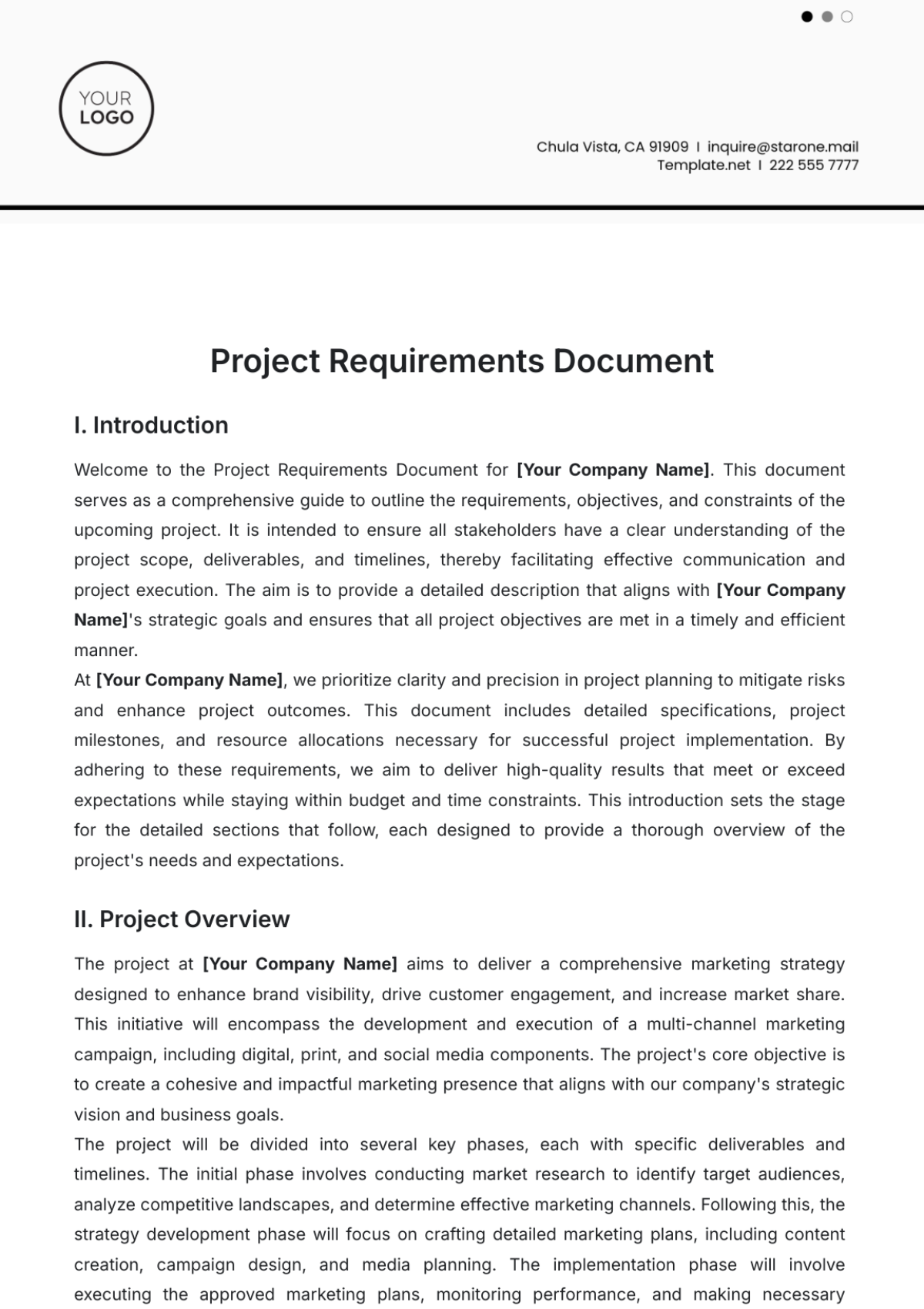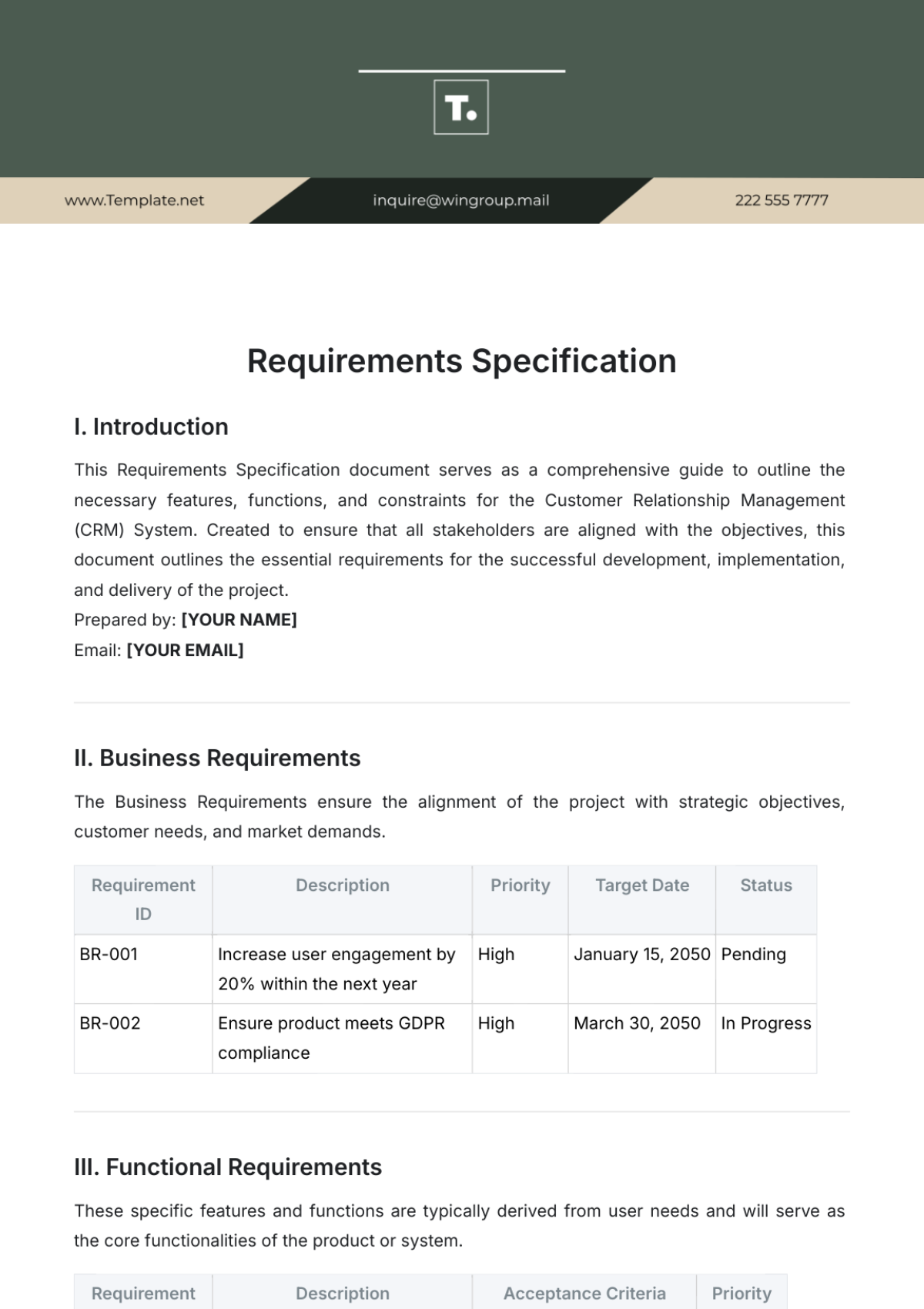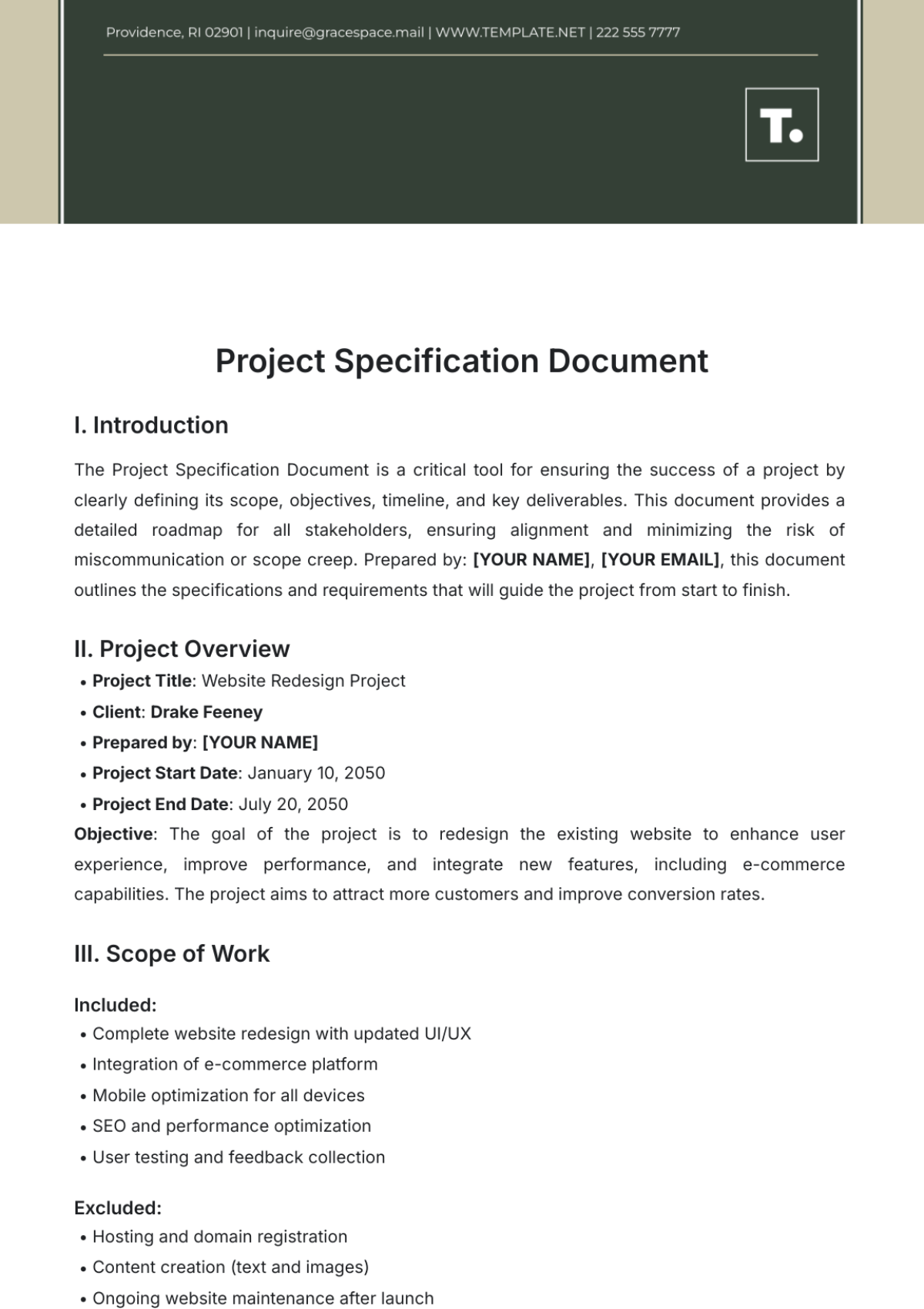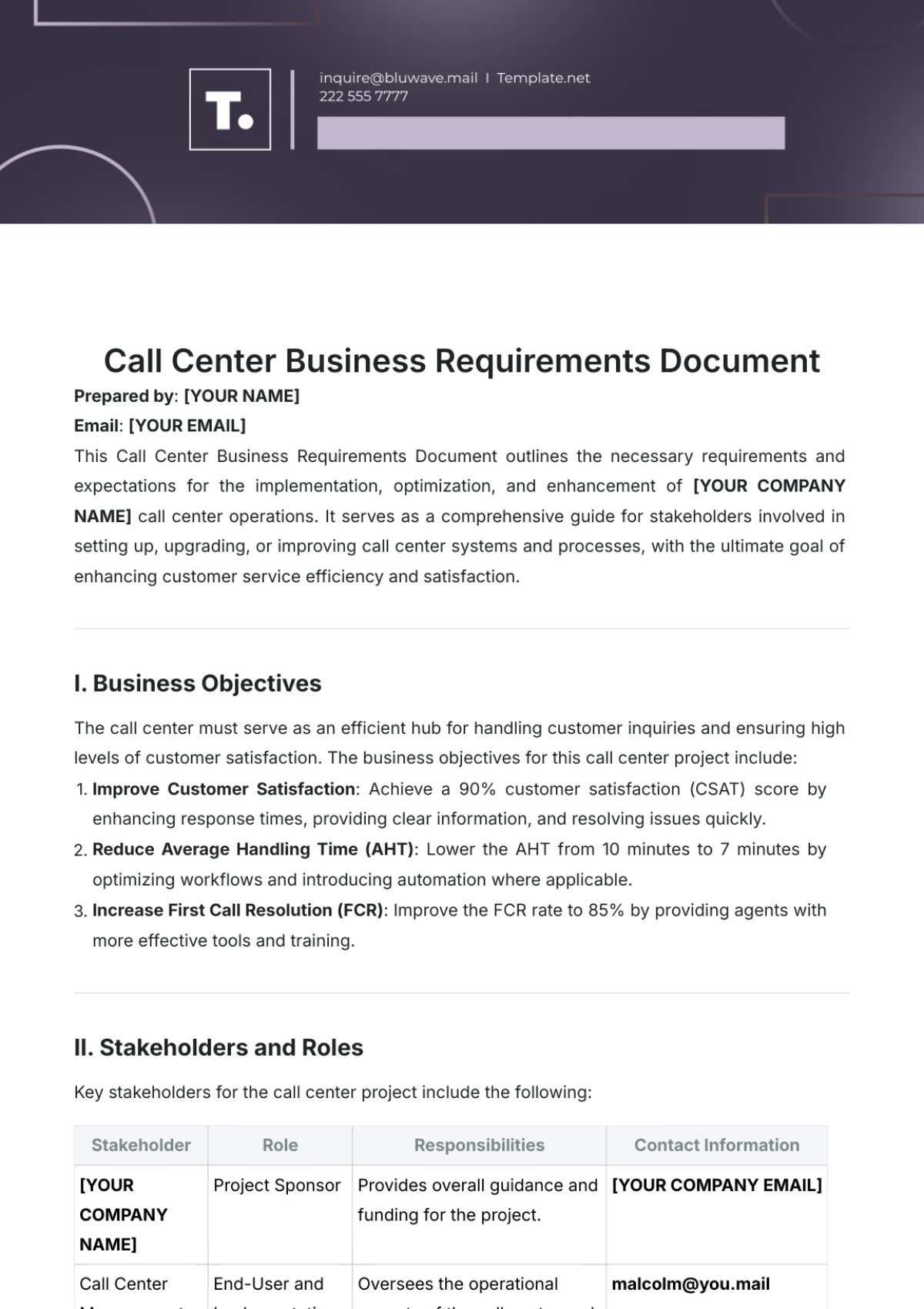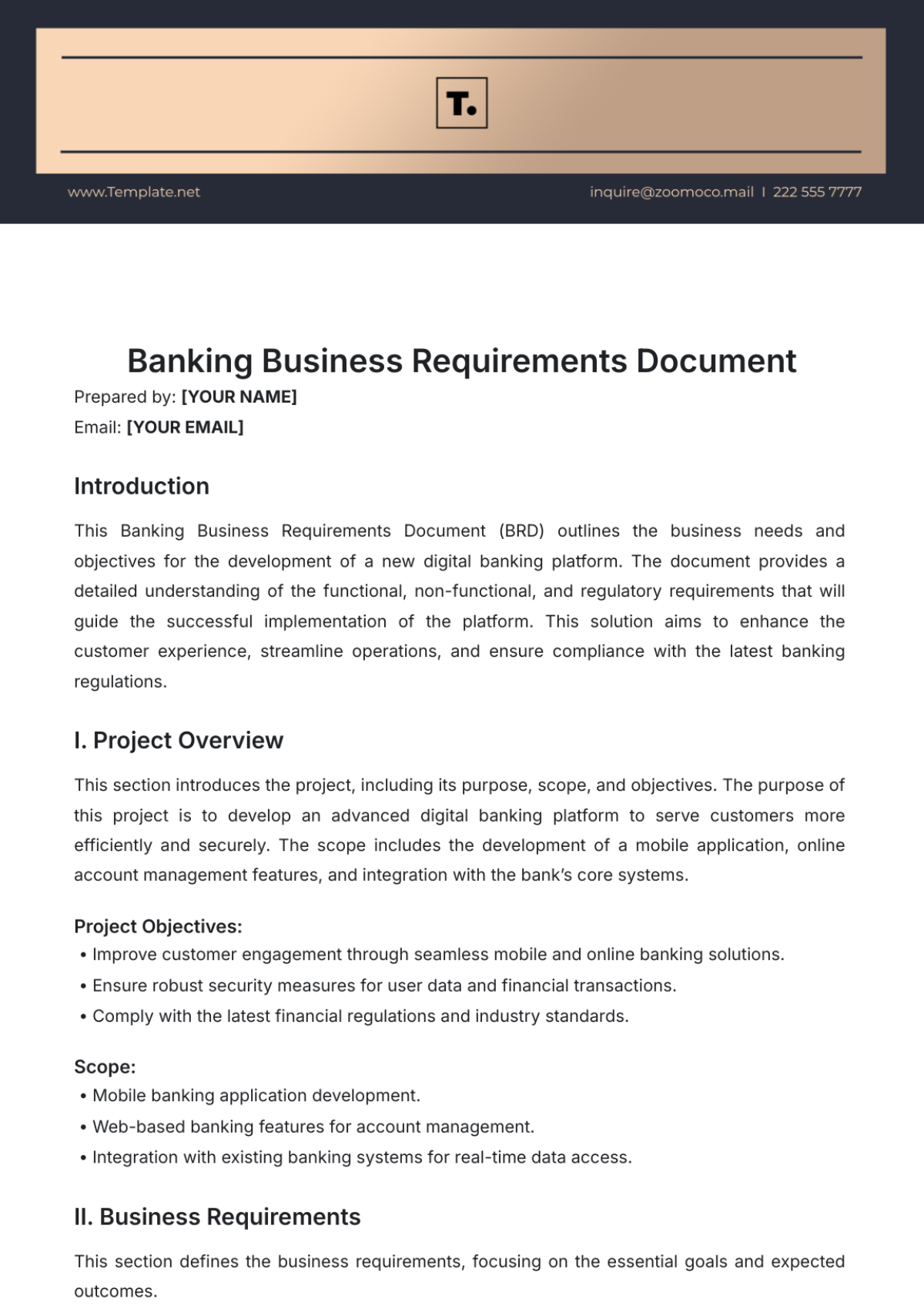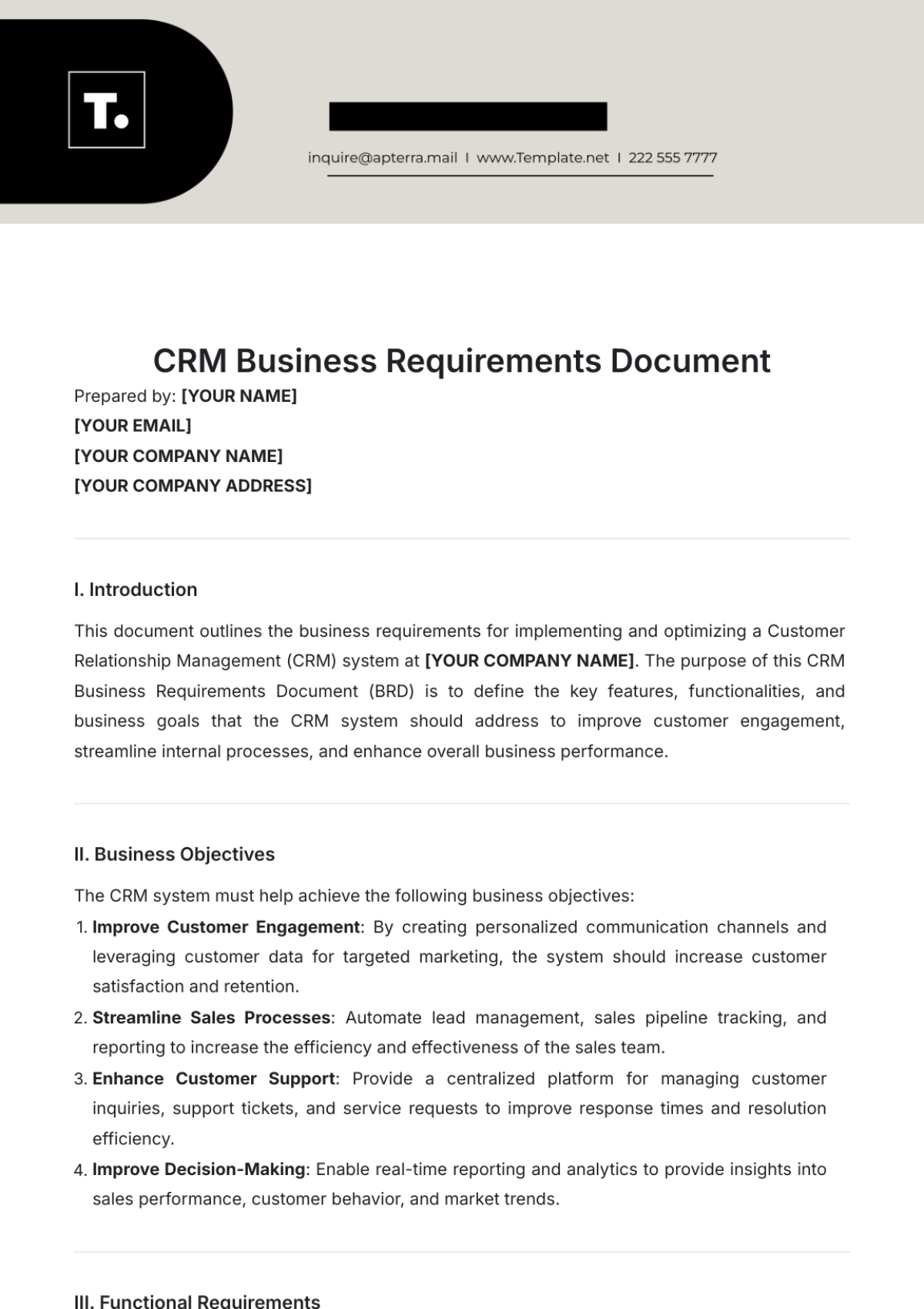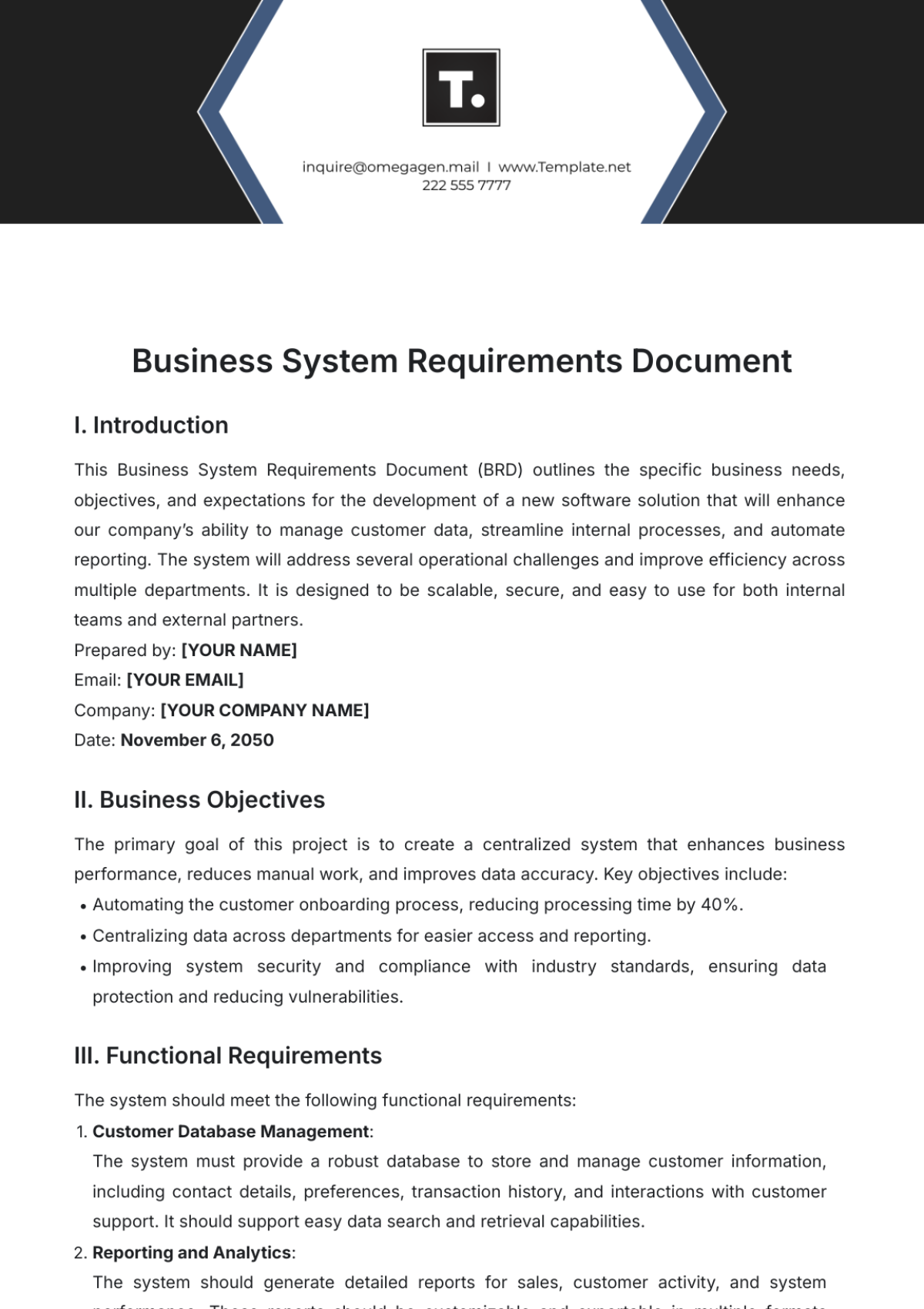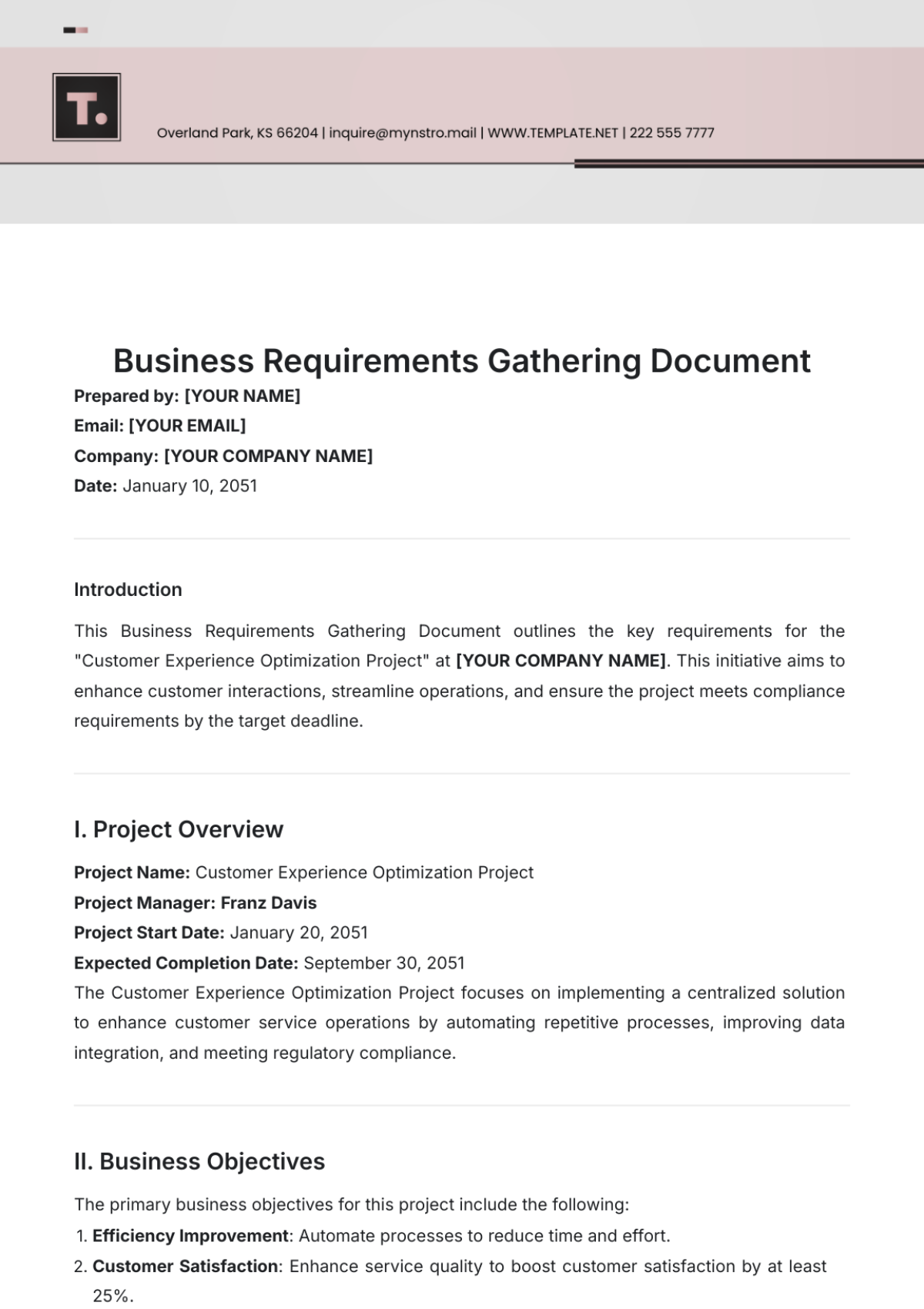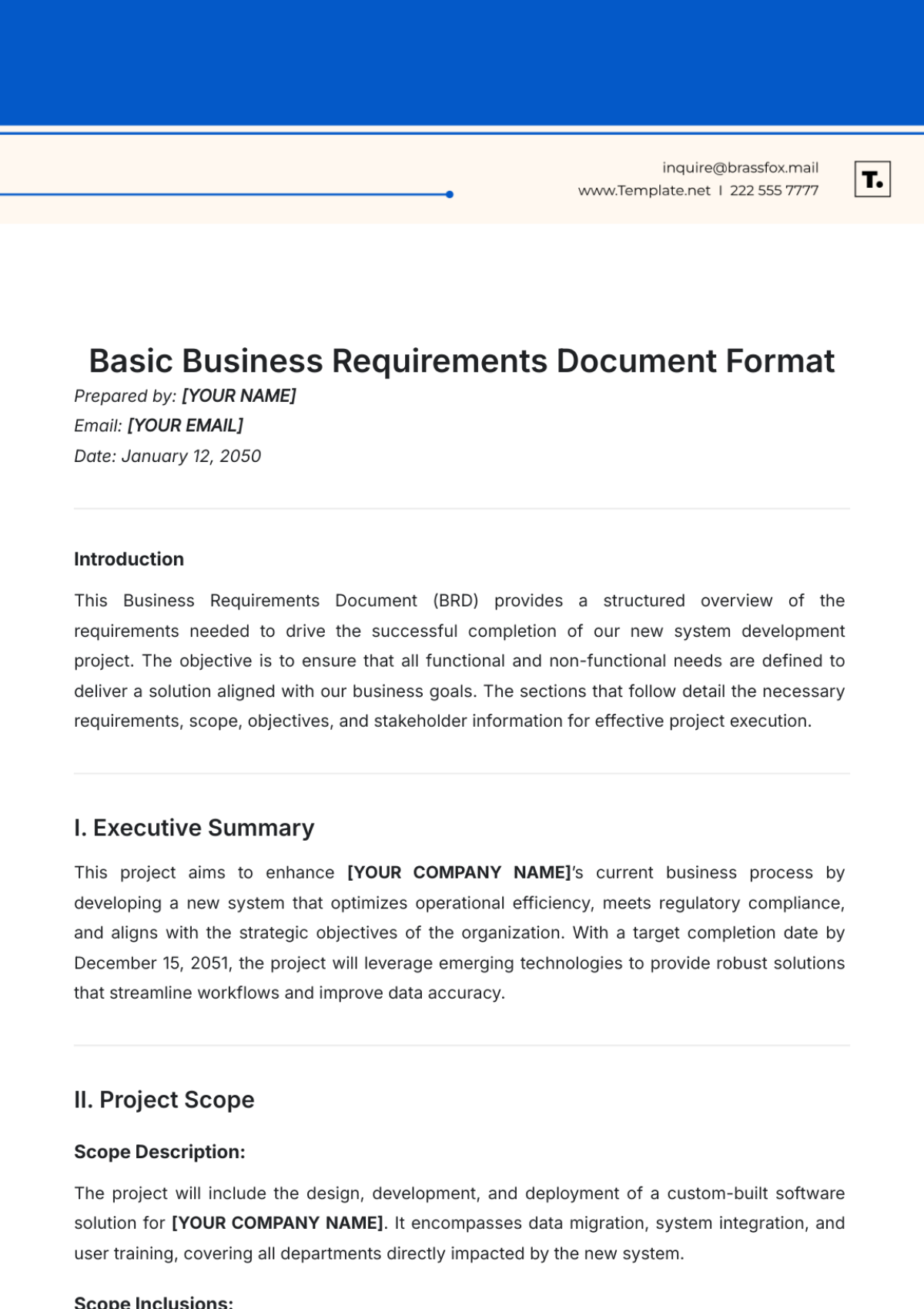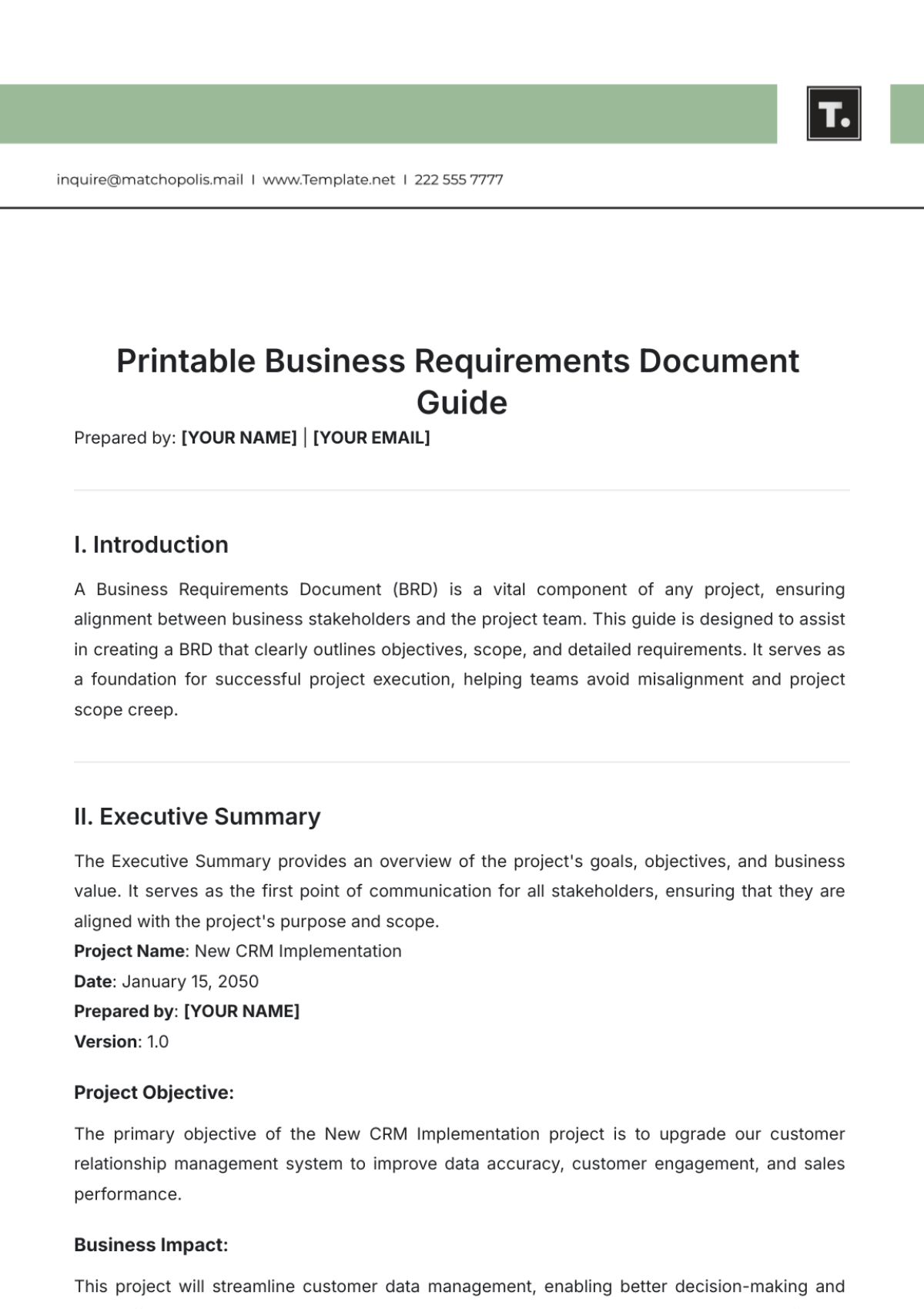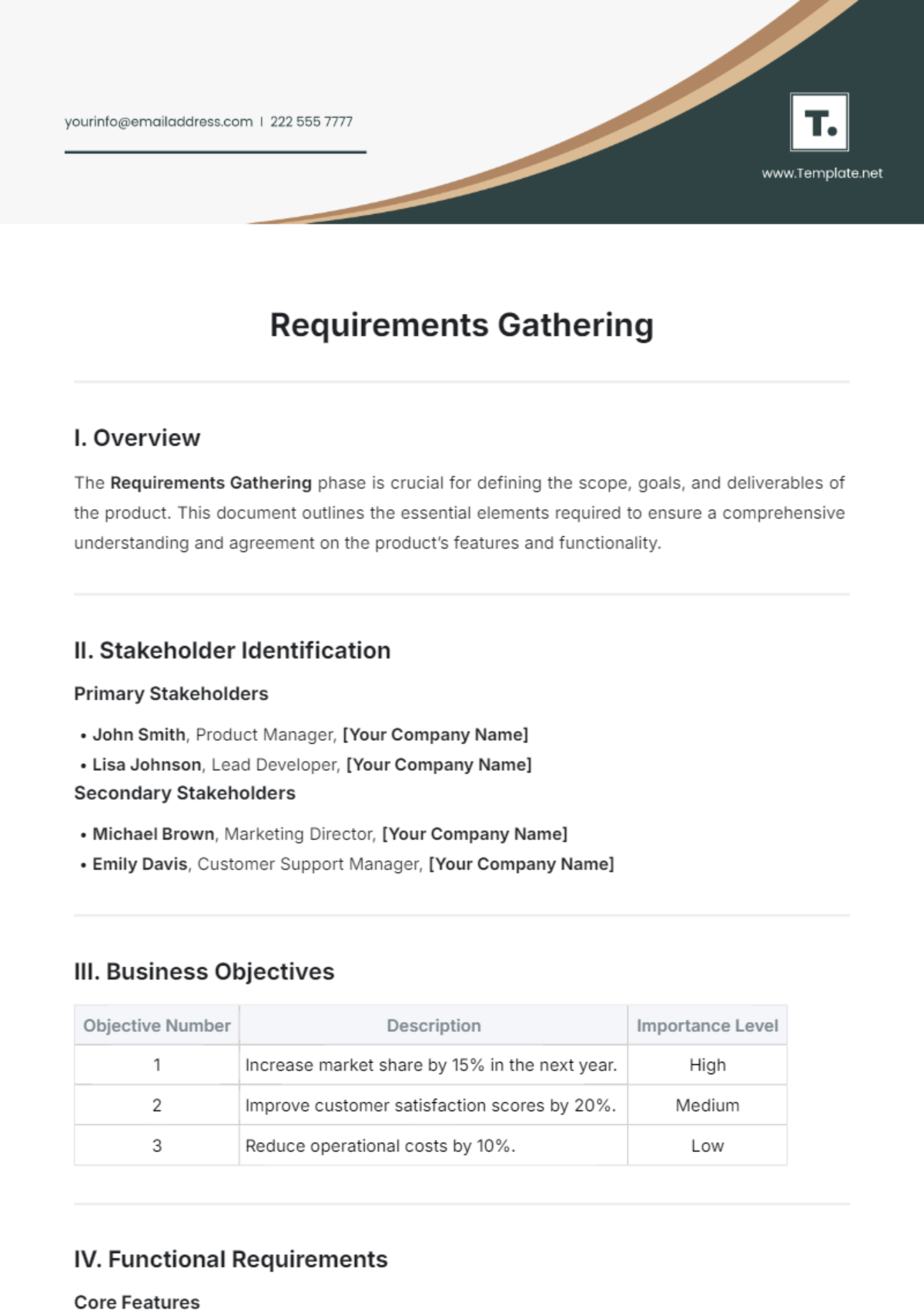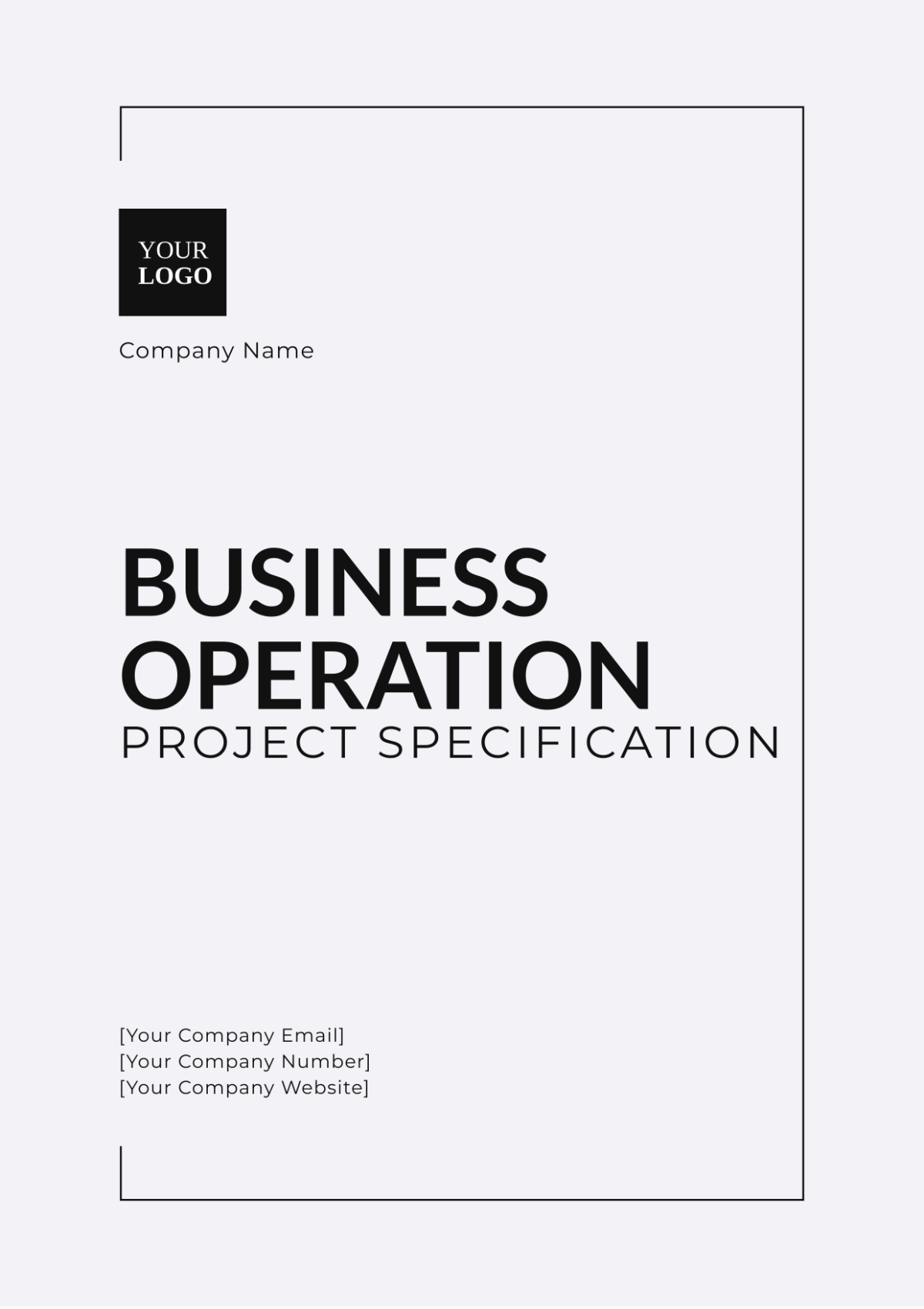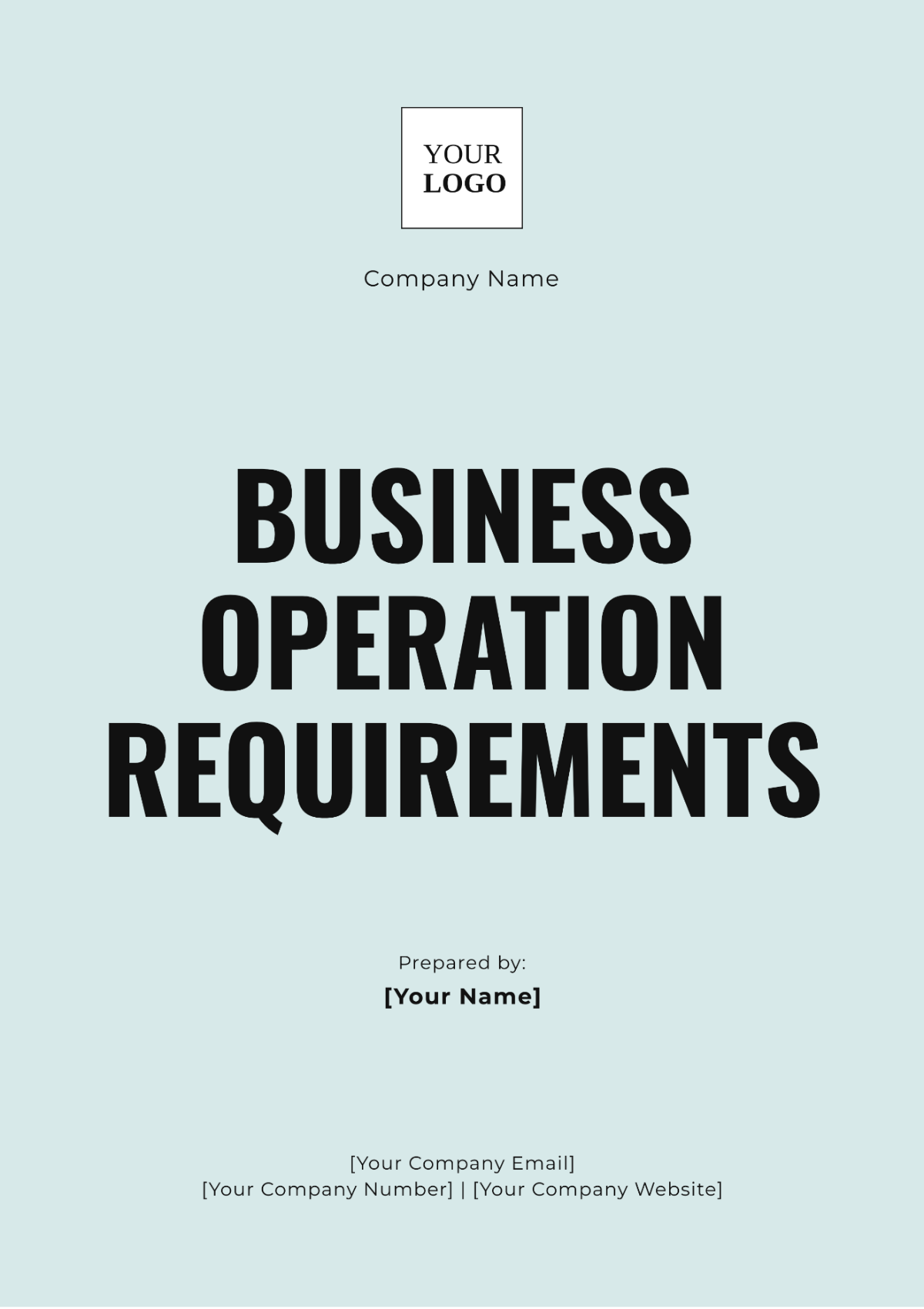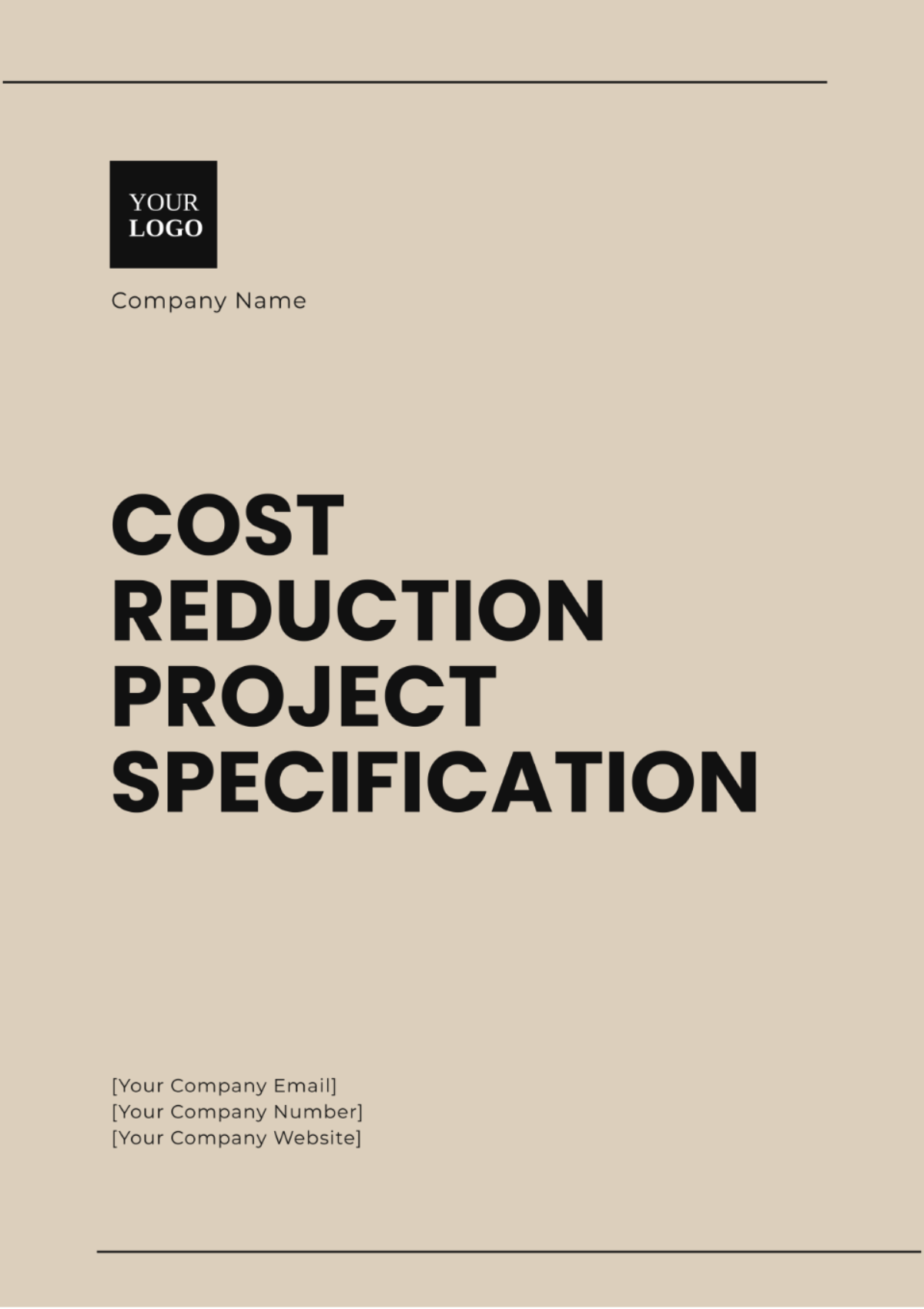Spin-off Company Project Specification
Prepared By: [YOUR NAME]
Date: [DATE]
I. Executive Summary
The objective of this project is to create a spin-off company that aligns with the parent company's strategic goals. This new entity will focus on leveraging a unique market opportunity identified through extensive research. The strategic importance of this spin-off lies in diversification, innovation, and capturing new market segments, ultimately contributing to the parent company's growth and long-term competitiveness.
II. Project Scope
This project includes the establishment of a new company, the development of its business model, market entry strategy, and operational framework. It will not cover any activities related to the ongoing operations of the parent company post-spin-off, detailed product development cycles beyond initial prototypes, or human resources integration outside key leadership roles.
III. Market Analysis
Extensive market research has been conducted to understand the target market, competitors, and potential customers. This analysis provides a foundation for strategic decision-making.
A. Target Market
Demographics
Age: 25-45 years old
Gender: All genders
Income Levels: Middle to upper-middle class ($50,000 - $150,000 annually)
Geographical Locations
Urban vs. Rural: Primarily urban areas with high density, but expanding into suburban regions
Regional Preferences: Focus on major metropolitan areas with significant market potential
Psychographics
Lifestyle: Health-conscious, tech-savvy, and value convenience
Values: Sustainability, quality, and innovation
Interests: Technology, wellness, and eco-friendly products
B. Competitors
Competitor | Overview | Share | Strengths | Weaknesses |
|---|---|---|---|---|
Competitor 1 | Premium tech gadgets | 30% | Strong brand, high-quality, broad distribution | High price, limited range |
Competitor 2 | Affordable, innovative tech solutions | 15% | Competitive pricing, customer engagement | Limited presence, lower loyalty |
Competitor 3 | Eco-friendly tech products | 20% | Sustainability, niche appeal | High costs, scalability issues |
C. Potential Customers
Customer Segment | Characteristics | Needs | Purchasing Behavior |
|---|---|---|---|
Segment 1 | Young professionals, tech enthusiasts | Cutting-edge tech, high performance | Frequent buyers, online shopping, value reviews |
Segment 2 | Middle-aged, eco-conscious consumers | Sustainable, energy-efficient products | Research-driven, premium eco-friendly options |
Segment 3 | Families, value-oriented buyers | Affordable, durable tech | Price-sensitive, seek deals, in-store shopping |
IV. Business Model
The new company's business model is designed to create value for customers while generating sustainable revenue streams. The focus will be on innovative products/services, customer-centric strategies, and partnerships.
A. Revenue Streams
Primary Revenue Streams: Revenue will mainly be derived from direct sales of innovative, customized products and subscription services that provide premium features or exclusive content, thereby creating consistent income.
Secondary Revenue Streams: Revenue will increase through technology licensing, strategic partnerships, and affiliate marketing.
B. Value Propositions
Innovative Solutions: The company has created cutting-edge product features that effectively tackle its customers' most critical challenges, offering practical solutions and setting the company apart from its market competitors.
Exceptional Customer Experience: Personalized support and high-quality service that enhance customer satisfaction and loyalty.
Competitive Pricing: Pricing models that attract customers, offer excellent value for money, and keep the business profitable.
V. Organizational Structure
The newly established company will be structured in such a way that it guarantees operational efficiency, clearly defined roles and responsibilities for each team member, and a streamlined process for making informed and timely decisions.
Key Roles and Responsibilities
CEO: Offers comprehensive strategic guidance and inspiring leadership by charting the company's course for future expansion and achieving its long-term objectives.
CFO: Manages financial planning, forecasting, budgeting, and investment relations to ensure sustainable organizational growth and robust financial health.
COO: Manages daily operations and optimizes processes for efficiency, driving operational excellence and scalability.
CMO: Develops and executes marketing strategies, manages brand identity, and drives customer engagement to build market presence.
CTO: Leads technology strategy, spearheads product development, and fosters innovation to maintain a competitive edge.
VI. Financial Projections
A meticulously crafted financial plan has been created, detailing budgetary needs, potential funding sources, and precise revenue forecasts based on market conditions and strategic goals to ensure smooth operations and growth.
A. Budget Requirements
Category | Projected Cost |
|---|---|
Initial Capital Expenditure | $500,000 |
Operational Expenses (Year 1) | $1,200,000 |
Marketing and Sales | $400,000 |
B. Funding Requirements
Initial Seed Funding: $700,000
Venture Capital: $1,000,000
C. Revenue Projections
D. Financial Risk Analysis
Market Risk: Mitigation strategies include diversifying the product portfolio to reduce dependency on a single market and employing hedging techniques to protect against market volatility.
Operational Risk: Implementing robust internal controls, streamlining processes, and adopting best practices to minimize disruptions and ensure consistent operational performance.
Financial Risk: Ensuring a strong capital structure through prudent financial management, maintaining adequate liquidity reserves, and securing diverse funding sources to safeguard against financial instability.
VII. Legal and Regulatory Considerations
The new company pledges to follow all relevant laws, regulations, and industry standards to ensure its operations remain legally compliant and ethically sound.
A. Compliance
Corporate Law: Ensuring proper business formation, adherence to governance standards, and accurate and timely financial and regulatory reporting to maintain legal compliance and transparency.
Industry-Specific Regulations: Adhering rigorously to product standards, safety guidelines, and quality control procedures to satisfy industry criteria and earn consumer confidence.
Intellectual Property: Protecting the company's innovations and brand through trademarks, patents, and copyrights, and actively monitoring for infringements to safeguard intellectual property rights.
B. Regulatory Approvals
Licensing and Permits: Securing all necessary operational licenses and permits promptly to ensure lawful business operations and avoid any regulatory delays.
Compliance Audits: Conduct regular and thorough audits to verify ongoing adherence to all applicable regulations, identifying and rectifying any compliance issues proactively to maintain regulatory integrity and avoid penalties.
VIII. Project Timeline and Milestones
The project timeline provides a clear roadmap for the establishment and operational readiness of the new company.
Milestone | Completion Date |
|---|---|
Project Initiation | January 2050 |
Market Analysis and Business Model Development | April 2050 |
Organizational Structure and Key Hires | July 2050 |
Financial Planning and Fundraising | October 2050 |
Operational Setup and Kickoff | January 2051 |
IX. Risk Management Plan
A. Risk Identification
Market Risk: Potential shifts in market demand and changes in the competitive landscape could impact sales and market position.
Operational Risk: Risks associated with process inefficiencies and technology failures that could disrupt operations and affect productivity.
Financial Risk: The possibility of funding shortages and unexpected expenses that could strain financial resources and impact project viability.
Compliance Risk: The risk of legal and regulatory breaches that could result in fines, legal action, and damage to reputation.
B. Mitigation Strategies
Market Risk: Conduct continuous market research to stay abreast of industry trends and consumer preferences, allowing for timely adjustments to strategies and offerings.
Operational Risk: Implement robust operational controls, standardize processes, and establish backup systems to ensure operational continuity and efficiency.
Financial Risk: Create a contingency fund to cover unforeseen expenses and maintain strong liquidity management practices to ensure financial stability.
Compliance Risk: Regularly review compliance requirements, conduct internal audits, and provide ongoing training to ensure adherence to all legal and regulatory standards.

